


ACKNOWLEDGED BY THE INDUSTRY AS THE LEADING MAGAZINE





ACKNOWLEDGED BY THE INDUSTRY AS THE LEADING MAGAZINE

The 106 series straightening bench is the world’s most advanced workstation that meet OEM repair standards for small, medium and large vehicles.
• LOAD CAPACITY:
• LENGTH:
• LIFTING HEIGHT:
The Multibench is a which employs an electro-hydraulic lift suitable for lifting most vehicles. The platforms sit flat on the ground to enable vehicles with limited ground clearance to easily drive onto the lift.
• LOAD CAPACITY:
• LENGTH:
• LIFTING HEIGHT:
The Minibench is designed to medium damage ease. It can be used as a lift or straightening bench, with a 6 ton pull column capable of delivering 360° pulls around the entire vehicle.
• LOAD CAPACITY:
• LENGTH:
• LIFTING HEIGHT:
The Touch provides the ability to measure a vehicle on any lift, bench or surface. Detailed pre-repair and post-repair reports ensure the return of the vehicle to OEM specifications.
• FAST AND
• MEASURE IN
• REAL-TIME




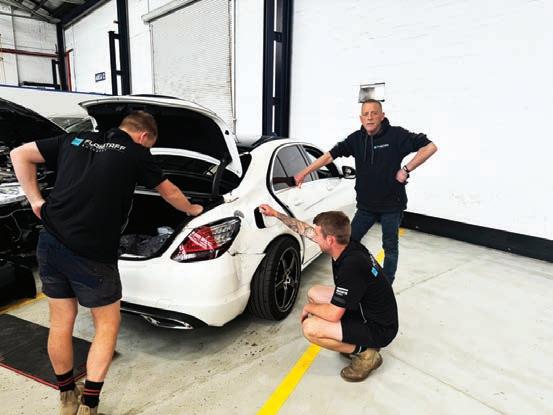

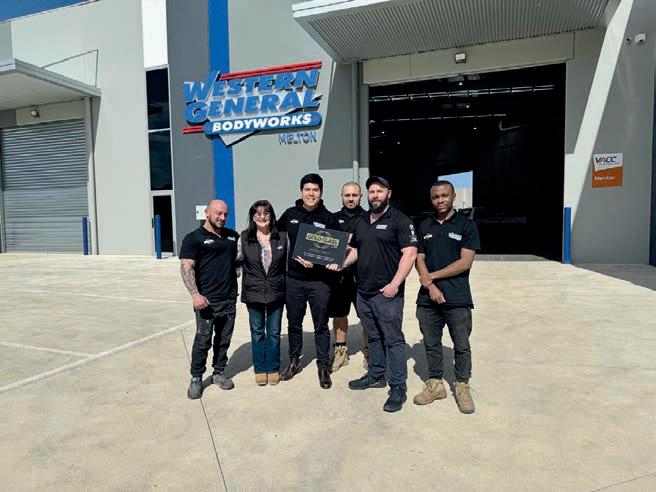
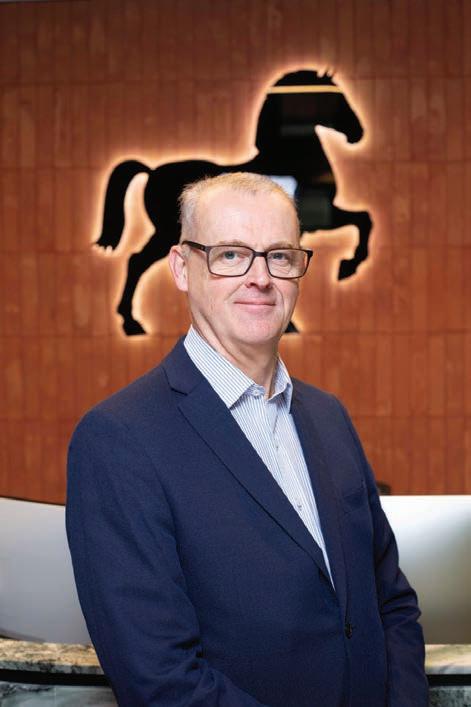
One of the great traditions developed by the National Collision Repairer magazine and its supporters, is the annual Lifetime Achievement Awards. It gives me great pleasure to announce that this tradition will continue in 2025 and again celebrate the best there are in a great industry. There are many industry awards, and each have their place in celebrating business success or people who are making a difference. Many awards are also valuable ways to spotlight what has happened over the last year and those who might otherwise miss that valuable pat on the back. The Lifetime Achievement Award is all this and more.
’s Lifetime Achievement Awards unique is in the title. This is an award shaped specially for those whose lifetime has been dedicated to the collision repair industry.
The criteria are both demanding and strict, but they too are what make it special. To begin with there is the parameter that any candidate must have a minimum of 20 years in the collision repair industry. Then the judges review the candidates’ contributions, not just to their own business, but to the wider industry and this entails those contributions beyond the scope of their employment. This element of the award is seeking that ‘above and beyond’ factor which makes the winners so special. It also taps into the lifelong passion for collision repair these nominees have, not only for their businesses, but the wider industry and a desire to see it grow and thrive.
In the 17 years since the Lifetime Achievement Awards were
started it has become a very exclusive club. This group not only demonstrates these qualities, but also reflects well on an industry that has such extraordinary people at its core; people generous with their time and efforts, people with a collaborative spirit who keep their eye on the greater good.
But there is also another quality to these awards that makes them so worthwhile. They are an opportunity for key players to have their time in the sun in an industry that is loaded with humble operatives who toil away for decades, often under the radar.
As always, NCR applauds winners like 2024’s recipient Craig Carey, who embodies these values, but all the recipients of the Life Achievement Awards. The list on page 33 of this edition is a lot more than a ‘who’s who’ of the collision repair industry in Australia. It is a celebration of dedication and invaluable contributions the winners have played in shaping the vital and modern field it is today. It is a ‘brains-trust’ of enormous experience that should make the industry feel proud.
And on the subject of unsung heroes, it seems appropriate that we should include in this edition of NCR a special profile dedicated to women in the industry. Not only are they an emerging force as more and more take the reins at repair workshops, they too have often played an unsung but vital part in many businesses and parts of the industry.
Stay tuned for the exciting information on the venue and time of the 2025 Lifetime Achievement Awards which will be confirmed shortly. Once again we can play our part in celebrating the industry. In the meantime, perhaps it is a good time to consider who you think might be appropriate for the awards.
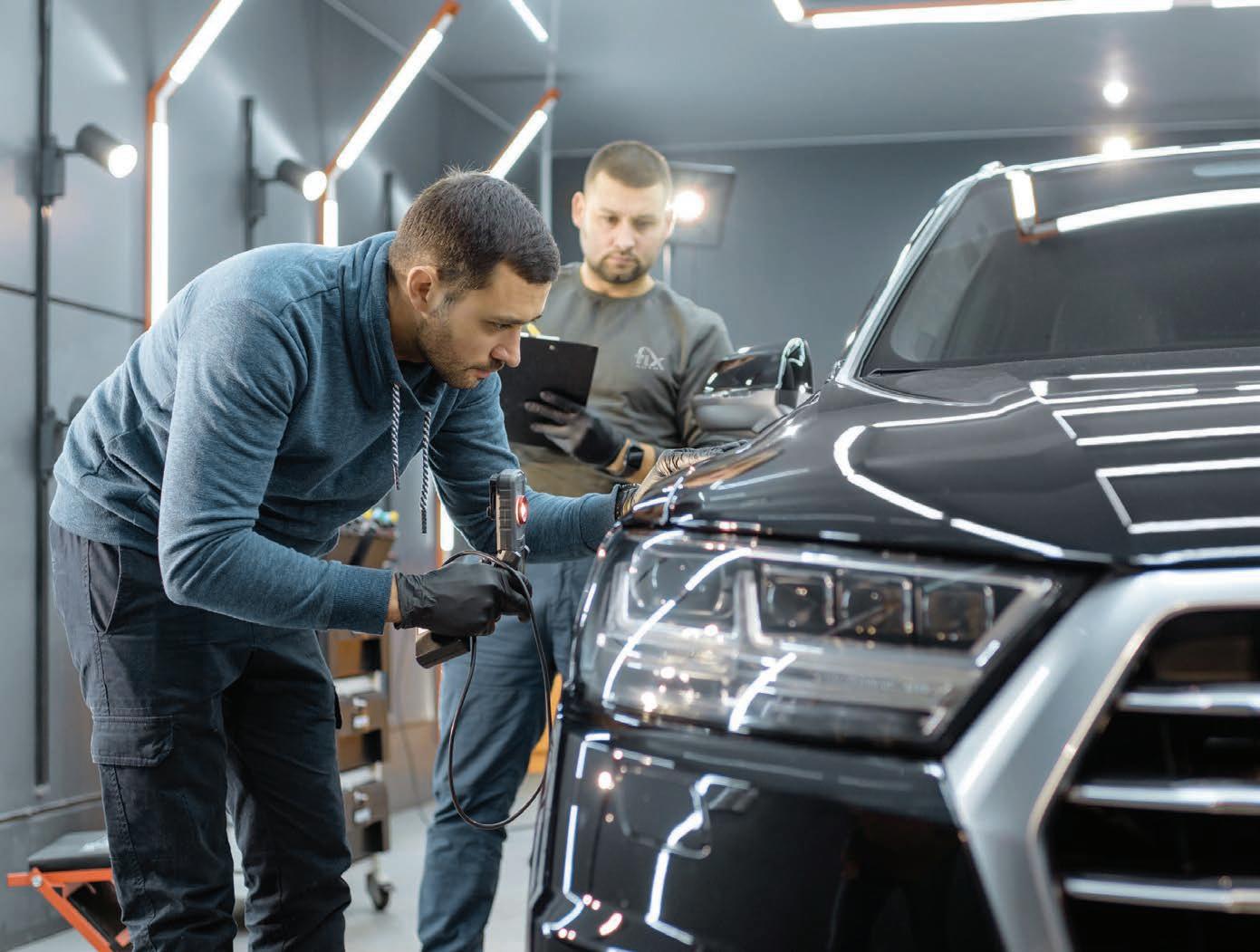
Eugene Duffy Editor
The National Collision Repairer

Unite

In a little over a year since its launch in Australia, Repairify has brought its global reputation at providing efficient solutions for sophisticated automotive technology to a multitude of repair workshops.
The rise and rise of ADAS is no exception, and now that repairers are finding the systems in almost every modern vehicle, it is another opportunity to tap into Repairify’s expertise and cutting-edge technology to complete calibrations quickly and safely.
Repairify offers its unique and worldleading services in remote diagnostics and ADAS solutions by providing the specialist expertise many workshops are looking for. Coupled with their cuttingedge calibration equipment, they make tackling ADAS systems an asset rather than a challenge to a repair business.
Repairify’s solutions remove the need for repair workshops to take vehicles back to the original manufacturer, call in contractors or outsource calibrations. Its renowned Remote Services bring the expertise into the workshop at the time and any time it is needed.

Complex systems made easy
Repairify has complex ADAS calibrations covered with its Digital ADAS Calibration Unit, a three-metrewide tool that includes a 65-inch TV screen that sits in front of the vehicle and mirrors that reflect under the vehicle, allowing for a range of ADAS calibrations to be performed.

The calibration unit aims to change the way a workshop does business by offering the full suite of equipment and skills needed for efficient, accurate and safe calibrations from targets and tools to expert support.
Repairify’s system is designed to be easy to use and has the ability to add efficiency to the workshop by cutting ADAS calibration set up times to around
Its comprehensive digital system has the major advantage of keeping pace as OEMs change and eliminates the need to purchase new physical target
boards by downloading new targets as they are released.
The objective for a workshop is to reduce key-to-key times and increase workshop revenue by keeping vehicles in house and Repairify’s solution helps with delivering just that.
The capacity to have a same day turnaround on some jobs by keeping vehicles in-house, not only leads to greater business profitability but to more satisfied customers.
As with all Repairify solutions, they come with comprehensive training and support, and are installed by qualified technicians.
Repairify solutions also include the back-up of integration with their Remote Services, through the All-In-On Diagnostic Tool, where on-hand experts have access to the secure gateways of the most modern vehicles.
For more information and to see how Repairify can help provide your ADAS solutions contact Repairify at repairify.com.au


With Remote Services, you can access expert diagnostics and support whenever you need it, with a wide range of OEM tools available to complete the most complex of repairs. You will be working faster with more accuracy on every job, making your customers happier and boosting your bottom line. Scan the QR and bring your workshop into the future.


Launch/SmartSafe’s ADAS equipment helps the repair workshop keep up to speed with the latest technology updates across the automotive industry.
Whether a workshop is transitioning to repairing on vehicles with ADAS features, or looking to upgrade existing equipment, Launch Tech Australia offers a variety of products aimed at ensuring the work they do on ADAS equipped vehicles, is efficient, accurate and reliable.
Launch Tech Australia (also T/A SmartSafe Australia) is the major distributor of LAUNCH & SMARTSAFE products in Australia and New Zealand. Launch Tech Australia provides a range of automotive workshop equipment including diagnostic scan tools, ADAS calibration equipment, vehicle hoists, wheel aligners, tyre changers, wheel balancers, battery testers and flushing machines.
With a changing car parc, Launch Tech Australia ensures the workshop is up to date and well equipped with the ADAS Mobile and the ADAS Radar 3-IN-1 Kit.
ADAS Mobile is a portable ADAS calibration tool for calibrating ADAS system. The ADAS Mobile is ideal for repair businesses that want to target new revenue stream. The unique fully foldable design can minimise the transporting risk, speed up the setup procedure and calibrate in various places.
Features with 23-style manufacturer standard targets and advanced ADAS software, the ADAS Mobile Standard Package offers a one-stop calibration service.
Features
• Start to calibrate in seconds, no more tedious work of disassembly and installation
• Fully foldable design
• Multi-functional base integrates 360° rotating wheels and height-adjustment
• Equilateral triangle design of the base ensures a stable frame
• Digital distance laser shows the crossbar height
• Five-line laser and fine-tuning switch help to centre the device
• Special small target design makes it convenient to carry and store
provide one-stop calibration service
• Compatible with AVM/ RCW/ BSD Targets of AUSCAN ADAS PRO
• Quick access to ADAS calibration with tutorial graphics on LAUNCH X-431 diagnostic tools
• Three optional packages of ADAS Mobile are available
ADAS RADAR 3-IN-1 Kit is a ADAS radar system calibration kit for passenger vehicles. The Kit can meet the calibration requirements of adaptive cruise system, blind spot monitoring system, lane change assist system and front corner radar system.
Features
• Supports calibration for multiple radar systems
• Providers detailed visual tutorials
• Pre-and-post calibration reports
• Functions:
• ACC (Adaptive Cruise Control), BSM (Blind Spot Monitoring), LCA (Lane Change Assist), FCR (Front Corner Radar) For more information, visit https://www.




For many business owners in the repair industry, ADAS calibrations are already a reality appearing in the workshop every day. The rate of innovation shows little sign of abating. A recent data analysis showed 90 per cent of new 2023 vehicles are equipped with at least six ADAS systems. So, it makes sense for any workshop to take advantage of this business opportunity and invest in the technology to safely and efficiently work on them.
While some workshops are still hesitant about the technology, the right investment can efficiently set a workshop up for ADAS readiness and help build their future.
Premium Diagnostics is a specialised service provider intent on giving repair businesses a competitive edge that enables them to position themselves as a cutting-edge business in automotive services. They aim to equip workshops to meet the growing demand for ADAS services whether it is windscreen replacements, bumper repairs, and general maintenance on systems like cameras and radars.

This investment in equipment and skills leads to increased revenue opportunities and the potential to complete calibrations on in-house repairs along with the lucrative work from insurance companies and even other repair shops.
Premium Diagnostics sells and recommends Topdon, one of the most
cost-effective calibration systems on the market, that can have a workshop equipped for ADAS calibration for as little as $14,500.
Premium Diagnostics offers three levels of package aimed at giving workshops the maximum flexibility and ‘bang for their buck’, from the Basic kit to the complete Max Package that will set a business up for an ADAS-driven future.

All Topdon kits are designed to maximise mobility and flexibility and deliver precision results. The foldable PX1000 calibration frame means set-up can be completed almost anywhere and can be completed in the workshop or on the road for in-demand mobile calibrations. Trained staff can complete the set up in less than 30 minutes.
Topdon PX1000 ADAS kits and Topdon scan tools, like the Phoenix Scanner feature a clear, intuitive interface with step-by-step guidance that minimise technician error and reduce training time, allowing workshops to
quickly integrate the tool into their daily operations.
The Topdon kits cover a wide range of ADAS systems, including cameras, radars, LiDAR, and night vision and even the basic kit covers a wide range of popular OEM brands. It is also built with ever advancing technology in mind, with regular software updates on new vehicle models and ADAS technologies.
Premium Diagnostics also prides itself on in house training and full technical support to ensure staff adapt to the equipment efficiently and boost workshop productivity.
For a starting point for any workshop seeking precise and intricate calibrations, the Phoenix ADAS Mobile

Laser; a Cross Laser; a Laser Reflector; an Auxiliary Mirror; an L-Type Positioning Bracket; Plumb Bob; a Targets Storage Bracket; two Targets Extension Rods along with multiple targets.
The Deluxe Package extends calibration capacity with 17 additional 360-degree surround view targets for a wide range of Asian, European, and American vehicles, covering almost every car brand on the road today. It also includes a doppler simulator, radar cone target and ACC reflector.
The Max Package gives its users robust calibration coverage, including all targets from the deluxe package, and an additional 14 targets. This package also includes targets for night vision systems, rear camera warnings, around view monitoring, and lane departure warnings. The ADAS Max

The Topdon PX1000 fame is foldable and designed for maximum flexibility.
Package aims to give workshops that make the investment now, the ability to work without limits for years to come.
For more information go to premium-diagnostics.com.au or phone 07 3180 6771

Are you hesitant about investing in ADAS calibration technology? With the Topdon Phoenix PX1000, you can easily turn ADAS calibration into a profitable service without breaking the bank!
Topdon is one of the most affordable ADAS solutions on the market, designed for workshops just like yours and our team is here to support you every step of the way.
Boost your revenue by offering ADAS calibration services.
Simple setup and operation – perfect for those new to the technology. Covering all major vehicle brands with reliable accuracy. Backed by industry-leading technical support
The PX1000 is portable for mobile calibrations Don’t miss out on this income opportunity! Equip your workshop with the Topdon PX1000 today for as little as $14,599! Stay ahead in the evolving collision repair industry.





Call us now to find out more about Topdons ADAS Solutions!
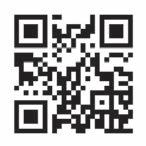
sales@premiumdiagnostics.com.au
www.premium-diagnostics.com.au
07 3180 6771

As collision repair shops across Australia strive to improve their operations and profitability, Axalta Coating Systems is leading the charge with its latest innovation: Axalta Irus Mix.
This fully automated, hands-free paint mixing machine is set to revolutionise the paint-room when it launches locally in early 2025, offering unprecedented benefits in speed, accuracy, and sustainability.
The introduction of Axalta Irus Mix marks a significant advancement in the automation of paint mixing. Following on from its global release in 2023 and now making its way into markets worldwide, including Australia, the Axalta Irus Mix machine is designed to simplify and streamline the paint mixing process. Traditionally, mixing paint has been a time-consuming task that required manual labour and precision. With Axalta Irus Mix, Axalta has eliminated the need for manual intervention, allowing collision repair shops to operate more efficiently than ever before.
The machine’s fully automated process seamlessly integrates with Axalta’s proven bottle system, eliminating the need for technicians to refill or decant products into separate containers. This not only saves time but also reduces the potential for human error, ensuring that each colour selected is mixed to perfection. Based on Axalta’s trials, the machine significantly reduces labour time associated with mixing, freeing up technicians to focus on other critical tasks in the repair process.
Moreover, Axalta Irus Mix is simple to operate, requiring minimal training for technicians. This ease-of-use further

contributes to labour optimisation, as staff can quickly learn to operate the machine and get back to their core responsibilities.
In an industry increasingly focused on sustainability, Axalta Irus Mix has been designed as a technology that aligns with these goals. The machine’s integration with Axalta’s innovative packaging, made from 50% recycled plastic, underscores the company’s commitment to reducing environmental impact. The precise dosing lids on the bottles ensure accurate colour mixing without waste, further minimising the environmental footprint of each job. For its launch into Australia, the Axalta Irus Mix system will be used in conjunction with Standox Standoblue and Spies Hecker Permahyd Hi-TEC waterborne paint systems.
success and global recognition
The success of Axalta Irus Mix is already evident on the global stage. The machine
was recently installed at Bodyshop Carenove in France, marking the 100th installation of Axalta Irus Mix worldwide. This milestone is a testament to the machine’s effectiveness and the value it brings to collision repair shops.
Axalta Irus Mix’s innovation has not gone unnoticed in the broader industry either. The machine was recently honoured with a 2024 Edison Award™ for Innovation in the Environmental and Industrial Solutions category, further cementing its reputation as a groundbreaking technology.
Axalta’s commitment to innovation and sustainability, as demonstrated by the Axalta Irus Mix, sets a new standard for the industry. For collision repair shops across Australia, embracing this technology is not just an opportunity—it’s a necessity for staying ahead in a rapidly changing landscape.
Axalta Irus Mix will be available in Australia in 2025, and for more information visit axalta.au/Axalta-Irus-Mix



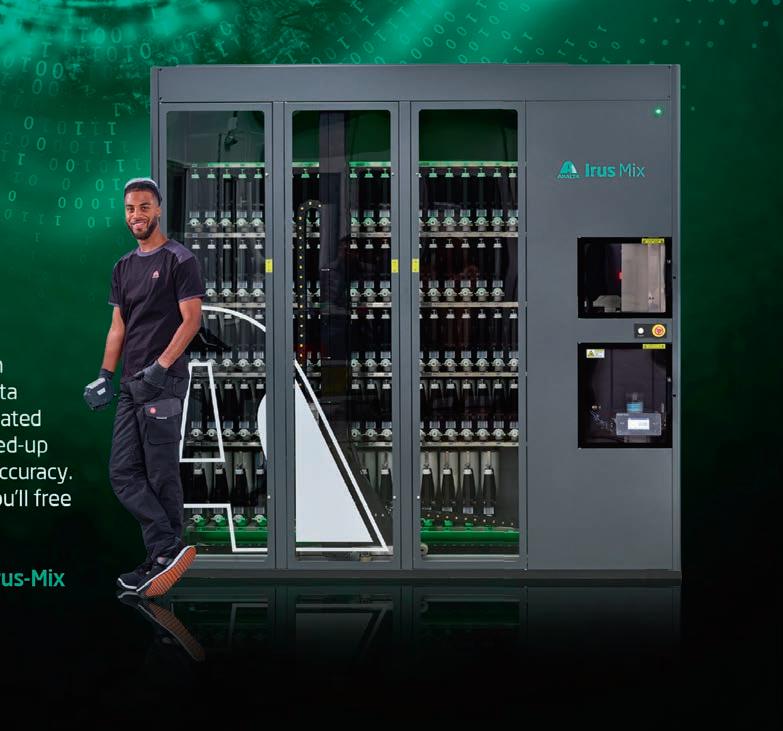
Axalta Coating Systems, the local importer for Sagola, has announced the Australian launch of the all-new Sagola 4600 DFT series spray gun.
While retaining the signature design of the original 4600 Xtreme model, the new Sagola 4600 DFT spray gun represents a significant leap forward in spray gun efficiency, comfort, and performance.
At the core of the Sagola 4600 DFT is the groundbreaking Dynamic Flow Technology (DFT™). This advanced technology optimises ambient air around the aircap, delivering a flawless finish even at lower working pressures. This results in superior performance, with enhanced fan stability, finer atomisation, and a consistent fan pattern from top to bottom. Whether tackling challenging base colours like metallics, silvers, or pearls, the Sagola 4600 ensures uniform paint distribution, eliminating defects such as shadowing, mottling and striping.
Painters will also benefit from the reduced bounce-back and overspray, making it easier to achieve precise application with smoother overlapping.
These enhancements not only elevate the quality of your work, but also streamline the entire painting process.
Another notable feature of the 4600 DFT is Sagola’s renowned Metal to Metal Technology (M2M™). With fewer joints and wear parts, this technology minimises ongoing maintenance costs, ensuring the spray gun remains reliable and cost-effective over time.
Locally released models will include

• SAGOLA 4600 BASE: The ultimate gun basecoat spray gun for colours, metallics and silvers.
• SAGOLA 4600 HVLP: Designed for high air volume, low pressure applications.
• SAGOLA 4600 CLEAR: Ideal for clearcoats, single-stage paints and OEM-quality finishes.
• SAGOLA 4600 CLEAR PRO: Perfect for newer technology clearcoats, such as fast drying, low energy clears with lower viscosities.
Sagola spray guns offer exceptional value, backed by a 3-year warranty. These guns are competitively priced,
with spare parts providing outstanding value as well.
Connect. Automate. Digitise. The end-to-end digital ecosystem bringing advanced, game-changing technologies to your collision centre
Sagola offers the flexibility to purchase replacement needles and nozzles sets or air caps individually, resulting in significant cost savings and underscoring Sagola’s commitment to customer satisfaction.
Introducing the 3D digital sprayout
Compact, fast, easy-to-use spectrophotometer
Axalta’s Cromax, has launched the new 1K aerosol primer-surfacer in grey (VS4), PS1504A Quickfill Primer-Surfacer designed for fast working processes to make bodyshops more productive, profitable and sustainable.

It aims to reduce process steps with a simple universal application and quick drying performance. Cromax PS1504A can be used directly on bare metal and the most common plastic substrates during a collision repair and can be re-coated after sanding with both waterborne basecoats as well as solvent-borne basecoats and topcoats.
It is suitable for both small area repairs and small rub-throughs.
PS1504A Quickfill Primer-Surfacer employs SprayMax technology to ensure sprayability and flow.
Axalta Product and Technical Manager for Axalta in Australia and New Zealand, Jim Iliopolous says the concept was about offering greater efficiency to workshops
The new Sagola 4600 DFT Series spray gun is now available. Secure yours today from your nearest Axalta Distributor. For more information, visit axalta.au/sagola or call Axalta on 1800 292 582. through innovative products.
“In our efforts to help our bodyshops boost their productivity, it is vital we offer them innovative products that not only promote shorter process times, but also reduce material consumption.
PS1504A Quickfill Primer-Surfacer does just that.
“It is part of our ValueShade® concept that delivers the optimal undercoat for every topcoat colour, for faster coverage and reduced basecoat consumption, which enables bodyshops to speed up processes and increase profitability.”
PS1504A Quickfill Primer-Surfacer Aerosol in grey is available now from your local Cromax distributor, with white and black soon to come.

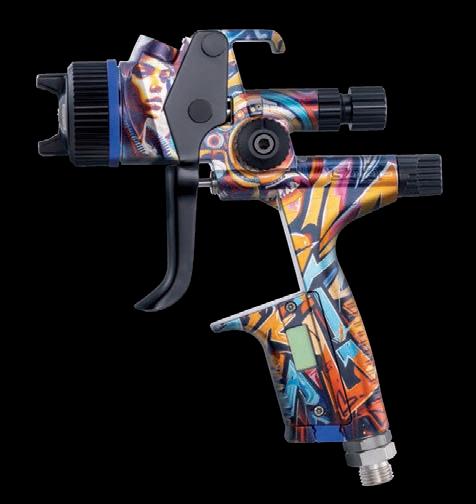



Aerosol convenience can be a perfect way to save time and boost productivity in the modern repair process. SEM is now offering four high-quality, locally made solutions. As well as providing highly effective options for various steps of the repair process, these four SEM aerosols are manufactured in Australia to ensure they are perfectly tuned to the needs of repairers in this region.
SEM aerosol products cover four key areas that can help enhance workshop processes.
SEM Universal Gun Cleaner. Featuring a 100 per cent virgin solvent formulation, this heavy-duty cleaner quickly removes both solventbased and waterborne coatings and overspray. By cleaning just as well as dedicated solvent or waterborne cleaners, SEM’s versatile 2-in-1 solution eliminates the need to keep multiple products on the shelf, while also reducing mistakes from choosing the wrong or faulty cleaners. This makes SEM Universal Gun Cleaner perfect for cleaning things like spray equipment, glass, metal, etc. or even blocked up aerosol can spray nozzles. Fitting the handy straw nozzle to the spray tip can also be used to help reach hard to get at areas.

This virgin solvent blend is specifically designed for the cleaning of panels (bare metal, primed or painted) prior to refinish or repair. It’s easy to use, leaves no residue and quickly and effectively removes contaminants, such as wax, grease, road tar, oil, silicone, adhesive residue, paint overspray and bug remnants.
SEM Guide-Coat Black gives you all of the performance you need but with none of the frustrating downsides. Thanks to its super convenient aerosol application, it’s easy to target just the required surface area which not only avoids mess, it also minimises wastage because you only use as much as you need for each job. Simply give the can a thorough shake and apply a number of light mist coats to achieve the required coverage. If there is any overspray, it simply wipes off. SEM Guide-Coat Black dries instantly and is ready to sand immediately. The fine spray is perfect for effectively identifying low spots, pinholes and other surface defects when sanding primer, yet it will not clog the abrasives.
When it comes to returning vulnerable areas, such as inner body panels,
body cavities and body channels, to original factory condition after a repair, SEM Rust Preventer Cavity Wax is the easy and effective way to achieve the special protection required. The semi-transparent black internal panel compound restores OEM levels of corrosion protection and comes with a variety of special features that deliver excellent performance and ease of use. Even in tight, out of the way places, the 360° application wand provides a spray pattern that achieves a true 100 per cent coverage with no patchy areas or missed places. In addition, the non-hardening SEM Rust Preventer Cavity Wax formulation ensures that it flows quickly over surfaces to fill any seams and provides superior wicking performance and adhesion.
You can find a range of innovative SEM products at PPG distributors and PPG Paint Powerhouse stores.
Gladiators of old were revered for being ultra tough and resourceful and now PPG is offering a next level protective coatings solution that invokes the spirit of these elite warriors. Developed by SEM Products, the all-new Gladiator XC Matte Extreme coating is a premium, matte finish, 2K urethane, textured protective coating that is perfect for a vast range of application, from automotive and light industrial to marine (above the waterline) and off-road. At the same time, it’s also incredibly easy to mix, apply and work with in general. While this makes it an excellent solution for DIY situations, it also opens up an abundance of opportunities for automotive businesses by providing a cost-effective way to help customers with a product tailored to jobs that require extreme protection.

Gladiator XC can be used across a wide range of different substrates and surfaces so the breadth of applications it opens up is really only limited by your imagination. The most obvious application is on ute trays and truck beds where it offers a superb alternative to plastic liners or mats. And it’s not just for new vehicles – it can be a quick and cost-effective way to rejuvenate the tray in an older ute and give it an enhance level of protection and appearance. With the ongoing popularity of 4WD and off-road vehicles, Gladiator XC’s protection can be applied to lots of potential problem areas, including underside components, bumpers, bull bars, running boards, etc. When it comes to caravan and recreational vehicle manufacture, Gladiator XC can be a weight saving alternative to checker plate and other shielding materials while achieving high level protection from stone chipping and other damage. Other suggested uses include trailers (both inside and out), agricultural, industrial and
commercial vehicles and equipment and much, much more. No matter which application you are tackling, Gladiator XC comes with PPG’s full package of support and training to ensure you get the best possible results.
Gladiator XC comes conveniently packed in super simple, ‘shake and spray’ kits, in either 1 litre or 4 litre sizes. Each 1 litre kit consists of a short filled 1 litre can of material, along with a 250ml can of hardener – the 4 litre kit is effectively four 1 litre kits in one package. Mixing Gladiator XC could not be simpler – just pour the 250ml of hardener into the 1 litre can of material, give it a shake and it’s ready to apply. Gladiator XC can be used in a variety of application modes to suit the job. As well as using the SEM Products applicator gun (sold separately), this versatile product can be rolled on, brushed on or applied with a recommended HVLP spray gun setup. The ability to purchase Gladiator XC in 1
litre kits makes it a convenient, costeffective solution for smaller jobs, touch ups or for adding to a 4 litre kit in order to extend its coverage for larger jobs. Gladiator XC is available in a pretinted black or there is the ability to tint it to a wide range of colours to suit the application. Existing PPG customers can do this using PPG 2K / DG tinter systems, such as Deltron DG, Paraglaze, Delfleet or Selemix. For anyone else, simply speak to your local PPG distributor or PPG Territory Manager about colour possibilities. Along with easy application, Gladiator XC delivers excellent adhesion and a rapid curing time, as well as incredible toughness and superior fade resistance.
While it was formulated using PPG’s latest global coatings technology, Gladiator XC is being manufactured in Australia using high quality raw materials. Gladiator XC range has been fine tuned for conditions in this region which include some of the highest UV readings on the planet.
Celebrating 20 years of Flagstaff Autobody, but even longer in the industry, John Barry has been a leading figure in the Melbourne collision repair scene. Known for efficient business operations, he is also the embodiment of what it means to run an independent workshop.
Opening in 2004, Flagstaff Autobody has gone through different workshop locations, survived the changing climate of the industry and economy, and has embraced new technologies to best benefit the business. The desire to succeed has outweighed the challenges and has created a momentum in the workshop that thrives on getting the job done ‘once, and right’.
John Barry is the managing director of Flagstaff Autobody. Over the past twenty years, John has built Flagstaff Autobody to what it is today – a successful workshop that has a trusted reputation and independent streak that is driven by the core values of independence and quality.
Flagstaff Autobody is currently situated in Kensington, a suburb on the fringes of Melbourne’s CBD. The convenient location serves both clients residing in Melbourne and in regional Victoria.
The almost one-hectare Kensington site is a state of the art workshop, with

a trusted reputation for quality repairs and a high standard of service. Flagstaff Autobody has 25 team members and the capacity to repair between 35 and 40 vehicles per week.
Throughout Flagstaff Autobody’s time on the collision repair scene, they have worked with some of Australia’s largest and most recognisable automotive companies, insurance companies, and fleet management companies.

The team at Flagstaff Autobody pride themselves on providing a corporate level of service with a personal feel, that is tailored to each client’s needs and requirements.
After working and managing multiple workshops before owning his own, John was ready to expand his capabilities and take on a new
challenge. In 2004, John acquired Flagstaff Autobody, when it was still situated in West Melbourne. The location suited the clientele at the time, with many customers in the fleet and corporate fields.
Not one to wait and see what happens, John was determined to make the business a thriving and successful workshop. He focussed his efforts on levelling up the existing business.
“My direction with the business was about providing a service that was above and beyond what was being offered elsewhere,” John says.
“I specifically targeted the needs and requirement of large fleets and corporates. The business grew quickly and over the years we had a customer base spread across Melbourne and well into regional Victoria.”
With the business expanding as the
years went by, so did the workshop size. After adjoining the neighbouring properties to the workshop, it was clear that the workshop had to relocate in order to continue growing and living up to its full potential.
“We were nearing the limit of space in West Melbourne when we received a notice from the landlord that our property/s were marked for redevelopment in the coming years,” John says.
With all signs pointing towards moving locations, John inspected a building in Kensington and moved quickly to secure it.
“I jumped on the opportunity with the intention to operate across the two locations until time run out at the West Melbourne address,” John says.
Fast forward to late 2009, and a destructive hailstorm hit Melbourne, causing large scale damage across the city. Both the Flagstaff Autobody worksites were badly damaged, but John saw the silver lining and with strategic thinking, pushed forward with his vision.
“We quickly realised this was actually very good news and secured a team of PDR (Paintless Dent Repair) technicians and commenced repairing what turned out to be thousands of vehicles,” John says.
After some quick thinking and a reignited passion for the industry, expansion was on the cards once more.
“I was reinvigorated with the industry after moving to the Kensington workshop, and moving out of West Melbourne,” John says.
“When an adjacent property to the Kensington workshop became available, I jumped on the opportunity but it wasn’t in any state to operate a business, it was in a state of disarray.”
Unfazed by the challenge and ready to take anything in his stride, John funnelled his newly found enthusiasm and energy into expansion.
“I started building what I had always wanted in a bodyshop. I left behind everything I didn’t like about the industry and changed and adapted every aspect of the business,” John says.


proper spaces for parts storage, processes for receiving new parts and worked with my team to refine our workshop standard.”
United by a shared goal and a positive momentum, John and his team at Flagstaff Autobody transformed how they approached everyday tasks.
“Acceptable was no longer enough and my team’s input was pivotal in setting the company standard moving forward,” John says.
“This is also when the company motto of ‘Do It Right, Do It Once’ grew to become part of everything we were doing as the tired old building started to shine into a modern, large and very well-equipped facility.”
With a large-scale workshop and a physical separation between the repair building and the refinish building, the old-school system of using a whiteboard to coordinate the day to day operations was becoming increasingly challenging. Creating a new, online system called Touchflow allowed the workshop to thrive.
“I had the idea of creating an electronic whiteboard that would display the daily tasks independently for each working area,” John says.
“We engaged a website developer around 2012 to develop an electronic representation of the age-old workshop whiteboard.”
The Touchflow system was an instant

was very modern for the time using touchscreen terminals and designed with minimal interaction or button presses required to move the jobs around the system.”
John designed Touchflow to be a continuously evolving tool that allowed for processes and functions to be

“All of a sudden, we were managing hundreds and thousands of parts movements each month with zero lost, missing or other issues,” John says.
“Parts control doesn’t even get a second thought now, it just happens. It is because this was exactly what the team needed not something forced upon them.”
There are plenty of memorable moments over twenty years of a workshop’s life. Yet, it is often the small moments that are the most memorable and can reap the most rewards, and in John’s case, this sentiment rings true.
“I was observing the workshop shortly after introducing Touchflow, when I noticed a staff member as he was finishing a job,” John says.
“I watched as he stopped, stood
The careful and considered response
and embodied the ethos behind Touchflow.
“It was proof to me that Touchflow and all the encouragement I was providing my team to be their best was paying off,” John says.
“We often joke that we would be blind without Touchflow, but it’s not really a joke. Touchflow has since evolved further and encompasses just about every step, stage or process in our workshop.”
Going from strength to strength and implementing smart systems is part of Flagstaff Autobody’s ability to dynamically analyse, adapt and change ‘on the fly’.
“We monitor every aspect of the business, not to criticise or call out someone, but to find areas we can improve or reason for a change. If you don’t monitor it, you can’t manage it!”
John says.
The landscape of the collision repair industry is changing, but John remains certain that Flagstaff Autobody will be a proudly independent workshop for decades to come.
“As an independent, the challenges for the future are remaining relevant as the waves of consolidators, corporates and MSOs gain a hold of the industry,” John says.
“That is why we have joined the Car Craft group which is a group of like minded and fiercely independent business facing the same issue. I am also a member of the Car-Craft Victoria board and aim to drive the effort towards a thriving industry.”
Discussing solutions to industry problems all boils down to networking and sharing ideas.
“The industry in Melbourne is very closed, and although we all repair damaged cars, I can only assume how other workshops operate,” John says.

“In the relatively short time that I have been part of Car-Craft, I have met, discussed and learned from business owners about their businesses where we are happy to discuss details that are usually held tightly.”
“I encourage other independent workshops to think about their approach to this growing concern for the livelihood of independent operators in this industry.”
After twenty years at the helm of the business, John has taken a sidestep
“I am responsible to ensure everyone is rowing in the same direction. I’m not directly involved in the tasks anymore, but through encouragement and building trust I empower my team to do their best every day,” John says.
“My focus is now about how we, as an independent workshop, can tackle the challenges presented by corporate entities and MSO’s gaining market share and getting a strong hold on the industry,” John says.
John’s sons, Chris and Daniel Barry

“It has been great to include my family and watch as they grow, develop and learn new skills and gain knowledge to make well thought out decisions,” John says.
“They have also given the business a stronger position for the future with new and fresh ideas.”
There is no doubt that electric vehicles are changing the collision repair game. With new technology and additional training required, the investment in learning about electric vehicles is on a lot of workshop’s minds.
“New thinking and ideas from Chris and Daniel are keeping us in the game with electric vehicles. As our customer base has changed over the years, so too has the way we deliver our service,” John says.
Watching his two sons take over the operations side of the business has been an inspiring time for John.
“Watching my sons and the team achieve success month after month and the rapport they are building with customers, and suppliers is inspirational,” John says.
“We have a great team of amazing people driving the success of Flagstaff Autobody and I am proud of everyone.”
It may seem simple but how to get out of a workshop can be one of the most important plans you ever devise for a business. Especially when it comes to protecting staff and customers.
The peace of mind of having an emergency evacuation plan has made it one of the most popular services delivered by PPG’s MVP Business Solutions team. Despite this, many collision centres are still dragging their feet, says Greg Tunks, MVP Business Solutions Manager ANZ.
Without an emergency evacuation plan, where does that leave your staff and visitors should a crisis situation occurring at your collision repair centre? In these pivotal moments, this crucial document can literally make the difference between life and death. Given that having an emergency evacuation plan is an absolute no-brainer, you have to wonder why many collision centres still don’t have one. Perhaps people think it will never happen to them and with a little luck and good management, you may never need to actually put an emergency evacuation plan into action – until you do! Crisis events are often accompanied by chaos so it’s very easy to lose track of where staff members or visitors are, particularly in a smoke-filled workshop. When the emergency services arrive, their first question is often, is there anyone left inside? Are you confident that you will have the correct answer?
Fortunately, the mindset across the industry seems to be changing because requests for help to develop a tailored evacuation plan for individual repairers has seen it become one of the most popular services being delivered by the PPG MVP Business Solutions team. Operating right across Australia and New Zealand, the MVP Business Solutions program is, perhaps, better known for working one-on-one with collision repair

businesses to implement productivity and profitability boosting strategies but we can also help with the essentials, such as an emergency evacuation plan or a traffic management plan. For a collision centre owner / manager, taking advantage of the service can be as easy as contacting your local PPG MVP Business Solutions Manager or mvp.anz@ppg.com to put the process into action. It starts with a shop visit to measure up the facility and then we use a special electronic drawing program to map out critical features, such as exit pathways, fire extinguisher locations, etc. From there, we can create a detailed blueprint that helps everyone exit your business safely and smoothly.
also crucial to ensure these exit points are not locked or blocked with clutter, such as equipment, old or new parts, etc. After exiting the facility, people should be directed to assemble at a suitable point a safe distance from the building. At this point, it’s particularly handy to have a check list of exactly who was onsite.
This is why every collision centre should operate a sign-in book or process. During an evacuation, someone should be assigned to collect it and bring it to the assembly point where it can be used to check off names and determine if anyone is missing. Establishing the exact number of people who are unaccounted for and where they might be is a crucial way to help emergency services staff target their efforts in saving lives.
In the event of a fire, access to the appropriate firefighting equipment – fire extinguishers or a hose reel – can make the difference between a minor event and a major catastrophe. However, this is dependent on the right type of fire extinguishers being located at easily accessible points and for staff to be trained on how and when to use them. It’s important to note that different types of fire extinguishers are designed to fight different types of fires. This crucial equipment also needs to be regularly serviced – generally every six months – to ensure it’s ready for action when required. This is where it’s sensible to contract a specialist company to regularly perform any servicing required.
Having an emergency evacuation plan is crucial but it can really only be effective if everyone understands it. As a result, it should be part of the shop induction process for new staff, as well as external



contractors who might be working on site. The document prepared by your PPG MVP Business Solutions Manager will include an emergency evacuation schematic plan which is designed to be printed in A3 size and displayed in prominent places around the facility.
To reinforce the message, a morning ‘toolbox meeting’ can be a great time for a short refresher session on the details of the emergency evacuation plan or how to use each fire extinguisher.
The chaos of an emergency situation



is where good preparation should really pay off.
PPG’s MVP Business Solutions program is available as part of PPG’s comprehensive support package and its aim is to help customers improve performance across the full spectrum of business activities, in order to enhance profitability. Enquire at mvp.anz@ppg. com or contact your PPG Representative or PPG’s Customer Service Hotline 13 24 24 (Aust) or 0800 320 320 (NZ).
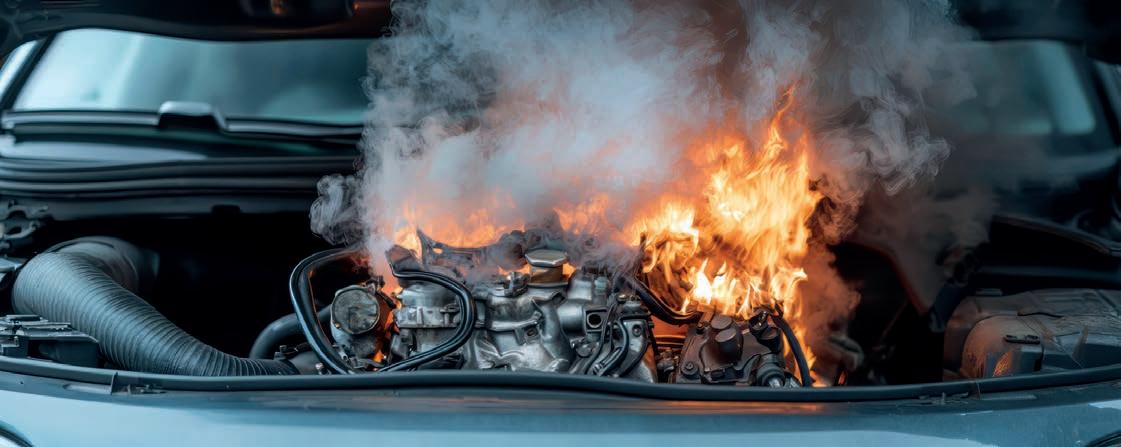
The bi-annual gathering of Fix Network in Australia was a celebration of growth and collaboration but underlying it all was the spirit of community.
The recent Fix Network Australia National Conference was the first time both the Fix Auto and Novus brands were brought together and united more than 120 attendees representing over fifty franchise businesses from across Australia at the Novotel Sunshine Coast in September.
The conference was themed, “stronger together,” and this idea of collaboration reverberated throughout the event, highlighting the shared commitment across the global and local corporate teams, franchisees, and industry partners.
Special guest Fix Network World president Steve Leal, who had travelled to Australia to support the event, was one of the keynote speakers and shared his impressive business journey and personal aspirations with the network.
Leal inspired attendees with his commitment to Fix Network Australia’s future growth and he reinforced his belief that the strength of Fix Network lies in its franchisees.
Fix Network Head of Business Scott Croaker, addressing the gathering, said 2024 had been a pivotal year for Fix Network Australia, following substantial expansion and restructuring.
The company has been strategically

focused on sustainability and growth throughout this period, he said.
The integration of Novus Glass WA & NT into Fix Network Australia was also significant milestone worth celebrating.
“This integration has further strengthened the network’s national market presence, marking another achievement in the networks ongoing success,” Croaker said. “As Fix Network Australia continues its expansion, the spirit of #strongertogether propels the network forward, promising innovation, growth, and a shared journey ahead.”
The conference also highlighted the incredible strength and unity within the network, consisting of over sixty
franchisees across the region, setting the stage for an exciting future.
In keeping with the conference’s purpose to inspire, excite, and unite members of the network, moderator David Lingham said the range of speakers and events offered valuable insights and fostered a sense of optimism for the future.
Brett Wallace from Suncorp Group gave an insightful presentation, highlighting the future of auto glass and the advancements in ADAS technology, while offering Suncorp’s vision for the industry’s trajectory.
Conference keynote speaker Mark Mathews, the renowned big wave surfer,

also captivated the audience with his life journey where his story of triumph over adversity deeply aligned with the conference theme of strength and unity
The Fix Network Australia National Conference concluded with an elegant Gala Dinner and awards ceremony, where Fix Network Australia honoured
the outstanding contributions of their committed franchisees who are fostering success and innovation within the industry.
The evening culminated in a charity auction that raised nearly $20,000 to support several charities across Australia and New Zealand, highlighting Fix


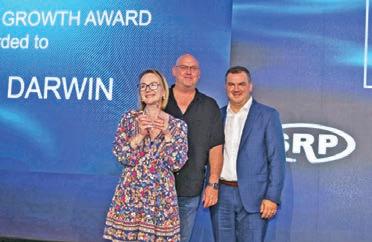

Network Australia’s steadfast dedication to community and philanthropy.
The Fix Network National Conference was also supported by Fix Network Australia’s industry partners and sponsors, ADAS Solutions, Axalta, BASF, National Auto Glass Supplies, ALP Oz Auto Moulds, 3M, and Auto Parts Group.


• • Business Growth Award 2024: Fix Auto Darwin
• Service Excellence Award 2024: Fix Auto Sunshine
• Operational Excellence Award 2024: Fix Auto Northern Beaches
• Overall Business Excellence Award 2024: Fix Auto Rockhampton

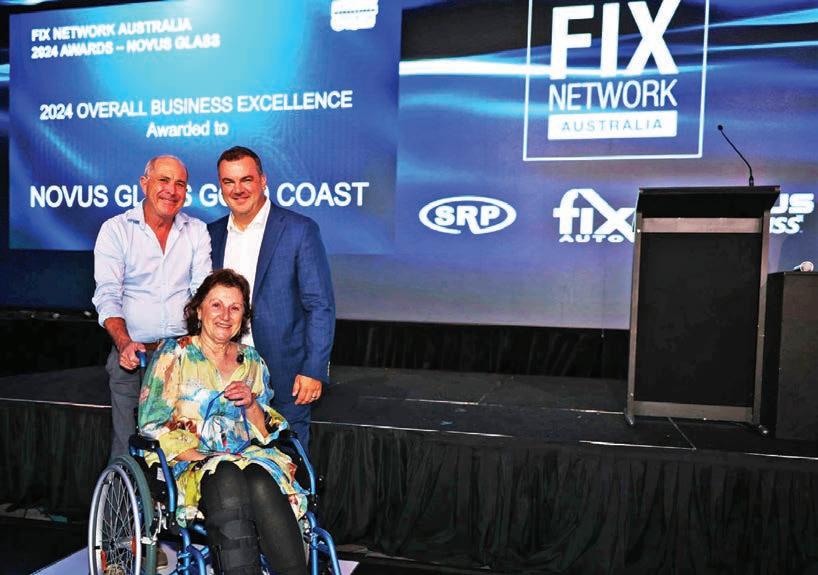
• Overall Business Excellence Award 2024: Novus Glass Gold Coast
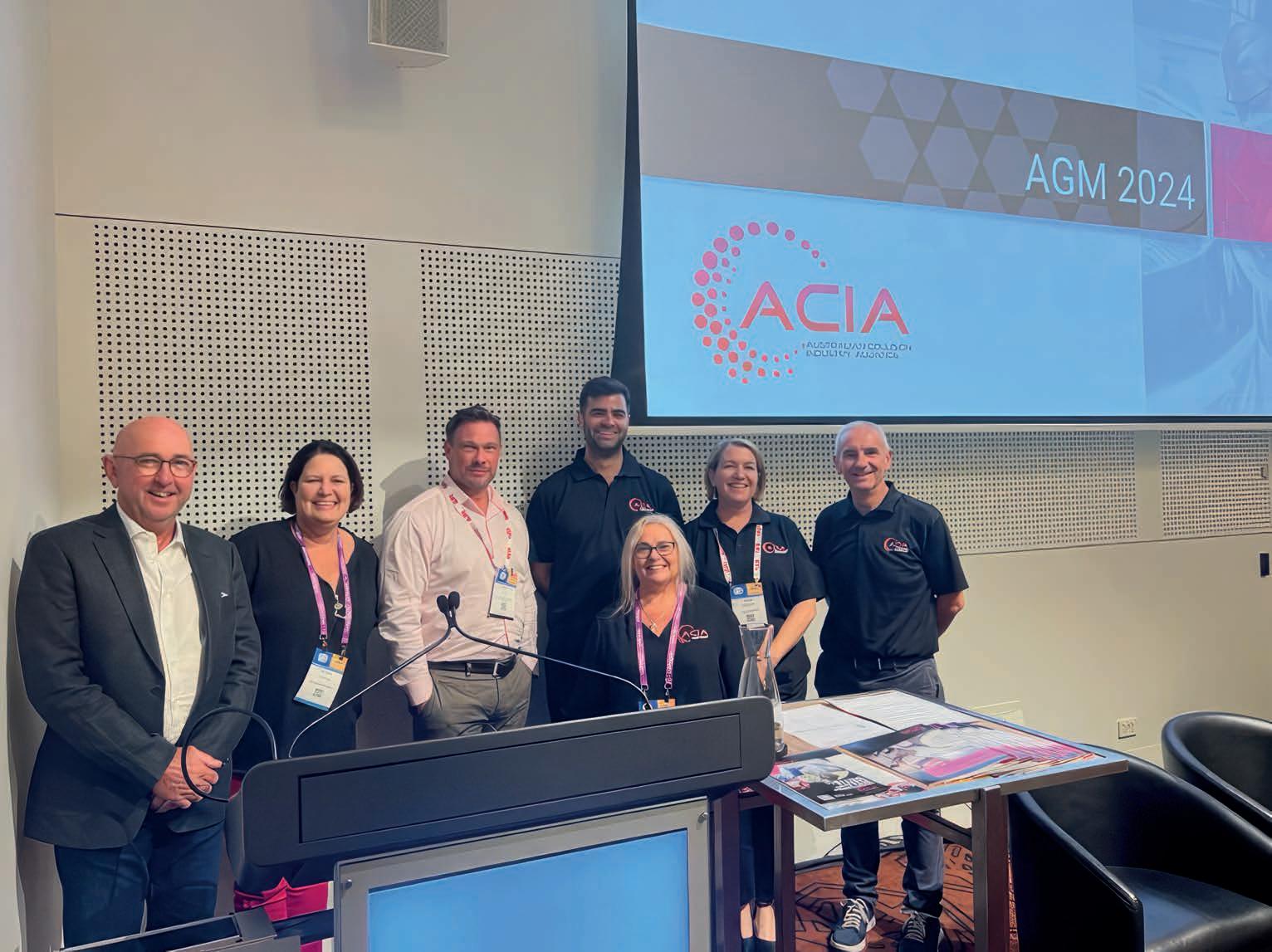
A people first approach, mixed with a desire to see the industry succeed, Hiliary Bradbury from the ACIA is one name behind a team of industry veterans aiming to uplift the collision repair industry.
Hiliary Bradbury ensures that her work is centred around one element: people. With a strong focus and a genuine care for the industry, Hiliary’s investment is geared towards long-term success.
Wearing many different hats and managing multiple different roles, Hiliary thrives on jumping in at the deep end and embracing the challenges in the repair industry.
Hiliary’s keen interest in creating and supporting the collision repair industry has manifested in a few different ways. Whether it’s being part of the Australian Collision Industry Alliance, attending career events and trade expos, or her role at the Auto Glass Association, to mastering virtual reality spray painting systems, her commitment is always evident.
Hiliary’s involvement in the repair industry
Based in Brisbane, Hiliary is the executive administrator for the ACIA and Secretariat for the AGA.
Her role with ACIA is to look after the administration side of things, which
includes managing the memberships, databases and working closely with the ACIA board, ensuring good governance and function.
Hiliary is also involved in numerous action groups within the Alliance, where her role is to assist with the action groups activities, whether it be communications and marketing, financial and audits or events and expos.
Hiliary highlights how the main goal of the ACIA is to change the perception of the industry through generating interest for people to take a second look.
“I get to attend a lot of fun events and meet a broad range of people,” Hiliary says.
“At these career events we are always looking for a way to maximise the exposure of the industry and get as many people on board as possible.”
The broadness of her multiple roles keeps her engaged in the industry, and up to date with the latest challenges and changes.
Hiliary acknowledged how her roles
aren’t necessarily hours based, but are rooted in a passion for the ACIA’s cause - to uplift the industry from the grass roots level.
“We try and get others to share the vision and passion for the industry too,” Hiliary says.
As well as being an advocate with the ACIA, Hiliary and her partner also own auto glazing businesses.
“There is a synergy between the glass industry and collision repair. Through my associations with the auto glass industry, I was introduced to the ACIA to work with them,” Hiliary says.
‘The two industries complement each other well.”
A significant part of Hiliary’s work is promoting the industry in alignment with the vision of the ACIA.
“It’s all about educating young people and their parents that the industry has changed,” Hiliary says.
“We aim to give them the view that collision repair isn’t what it used to be. It is a highly technical trade. It’s a

very attractive career pathway with opportunities.”
For Hiliary, helping people to see the reality of the industry is her main focus while she is at industry events.
“I love to help develop people,” Hiliary says.
“When we speak to the parents at the career days we try to open their eyes to careers in the collision industry.”
“Most people only know about the mechanic side of the automotive industry, so it’s great to explain and share the possibilities available in the repair industry specifically.”
Female representation in the industry has been one of the many focuses for the ACIA, and Hiliary actively encourages females to rethink a career in the industry.
“There is an artistic side to the industry that not many people know about,” Hiliary says.
“When we speak to young girls, the artistic side to spray painting is often of interest to them because a lot of them enjoy being creative, and a career in spray painting is just another way of
for people to consider a career in collision repair.”
Networking and connecting with other females in the industry has identified the multiple roles females can explore if they give the industry a chance.
“I met some inspiring young ladies at a women’s event last year. They were all spray painters and have now gone into parts, estimating and the quoting sides of the business,” Hiliary says.
Changing the perception of the industry, and creating a culture among workshops to embrace change, is at the forefront of Hiliary’s ethos.
“The ACIA is a great tool for the industry. Everyone knows there are issues with the ageing workforce, retaining staff and attracting people in the industry,” Hiliary says.
“The industry is on a huge curve, and the technological updates and advancements are constant. There are so many new skills that need to be learned.”
Hiliary believes the industry needs to pivot towards focussing on learning,

industry that is excited by change and technology.
“We are trying to encourage a new mindset. It’s all about a long-term goal,” she says. “We have to be prepared to move forward and adapt to the changes. At the ACIA we have great support from the suppliers, we now just have to convince the smaller operators that there is a long-term benefit to investing in the future.”
In her role with the AGA Hiliary is currently preparing for the Auto Glass Trade Show, which will be held in Melbourne on the 9th of November. (See

Forecasting into 2025, the ACIA will be at Summernats in January, chatting to motor vehicle enthusiasts. Hiliary will also be representing ACIA at multiple Career Events when the calendar
“We meet a lot of people who have a passion for vehicles, and we love to spotlight our industry and let them know they can turn their passions into a
Her continued motivation all boils down to one central element: the people. Whether that is other industry members, students at a careers day or general members of the public, Hiliary is passionate for the growth of the industry.
“The ACIA aims to be the united front for the collision industry, backed by a strong and trusted guidance,” Hiliary
“It is a great industry to be in, and we want more people to know how
Careers in the automotive industry are often overlooked by young people, but Kynan Bonanno has found his stride and passion for spray painting vehicles, and is embracing every opportunity the industry has to offer.
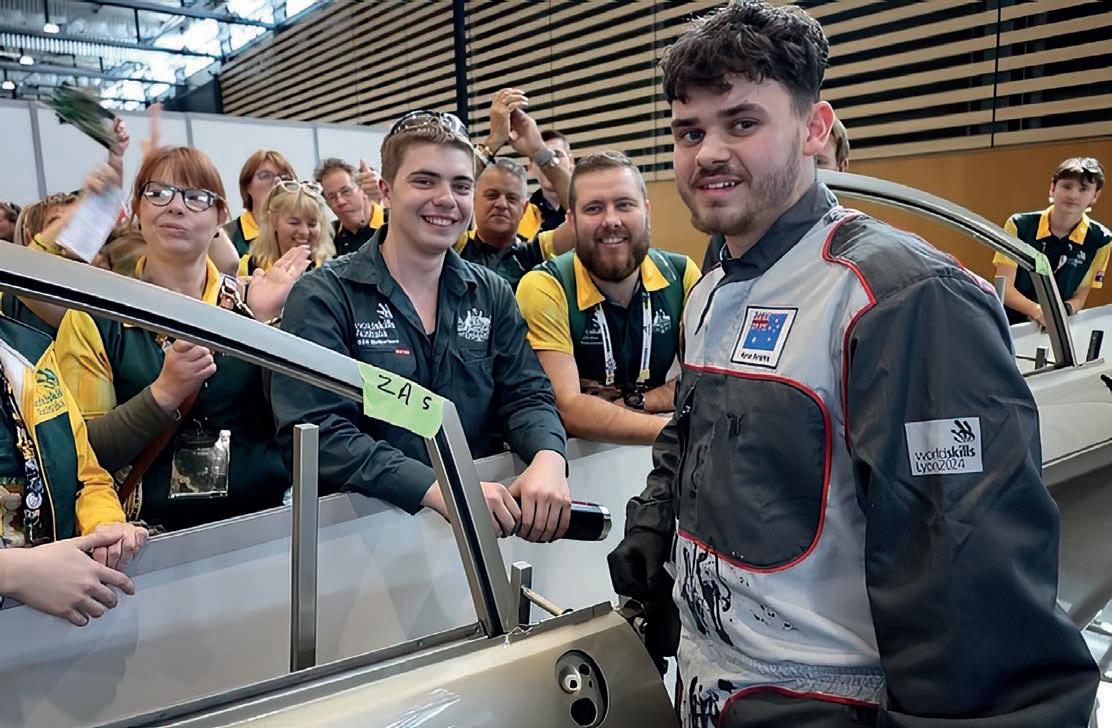
Swapping the outer suburbs of Sydney for Lyon, France, third year spray painting apprentice, Kynan Bonanno represented Australia in September at the WorldSkills International Competition.
Bonanno currently works at his father’s business, Boxalls Automotive Industries in Pendle Hill, New South Wales. He says he inherited a passion for automotive and spray painting from his father, and was inspired to follow in his footsteps.
“He helped me restore my first car at the age of 15,” Bonanno says.
significant feats in his career.
“Being the WorldSkills National Winner, a WorldSkills Skillaroo and being nominated for Apprentice of the Year for NSW have all been highlights so far,” Bonanno says.
The Olympics of trade skills, the WorldSkills International Competition
France was meeting all kinds of people from Australia and from all around the world,” Bonanno says.
“Seeing how different people work, even though we are in the same industry was awesome to watch.”
The Car Painting category at the WorldSkills Competition requires participants to restore damaged vehicles to pristine condition, with an
NCR recognises the ongoing support of IAG for the Future Leader’s series and their continued support in developing industry skills.

emphasis on precision in matching colours, textures, and finishes.
Participants need to present their finish products in a flawless, showroom-quality finish under stringent competition standards.
Outside of the Competition, the Skillaroos were able to experience all that Lyon had to offer.
“We went to a local school to learn about French culture and meet young students from the school,” Bonanno says.
“The Car Painting competitors were all taken to a Car Museum in Lyon to see the history of old European cars, which was a cool experience.”
Representing the MTA NSW, Bonanno finished 12th at the 47th WorldSkills Competition and was proud of his time spent in Lyon.
“There is always room for improvement, and I always strive to be better. I am proud of what I have accomplished,” Bonanno says.
Before travelling to Lyon, Bonanno already proved his skills at his impressive performance at the Automotive Refinishing category at the WorldSkills National Championships in Melbourne. Bonanno secured first place at the regional level, and then won fourth place at a national level.
Before travelling to Lyon and being chosen to represent Australia on the
world stage, Bonanno was chosen as a finalist in the Apprentice of the Year category by the MTA New South Wales in July.
In preparation for the International Competition, Bonanno underwent months of training to qualify him for the 2024 Skillaroos Training Squad.
“The training I received prior to the competition from 3M and Glasurit was eye opening,” Bonanno says.
“Learning how to use water-based paints was really interesting as it is not a system I had used before,” Bonanno says.
Bonanno told NCR in May that his motivation came from the finished product and pursuing the perfect job.
“Some panel repairers talk about the feeling of a finished job but for a painter it’s even better, once you see that shiny
paint, it is something else,” he said while competing in Melbourne.
Preparing for the international competition, Bonanno learned how to navigate the strict standards of the Competition.
“The preparation for WorldSkills Lyon has given me the opportunity to train with products that I haven’t used before, and allowed me to build connections in the industry,” Bonanno says.
MTA NSW ensured Bonanno was equipped to compete at the highest level and covered the costs of his flights, accommodation, and additional training leading up to the competition.
MTA NSW Stavros Yallouridis, CEO says the industry body was excited to see its former student represent MTA on the world stage.
“Kynan’s journey to WorldSkills Lyon 2024 is an example of how top-tier training is an asset to the future of the automotive industry. We are incredibly proud of his accomplishments and excited to see him represent Australia on an international stage.”
After returning from the WorldSkills Competition, Bonanno is back working with his father in the family business.
“The Competition was great, but now I am working towards finishing my apprenticeship,” Bonanno says.
“Beyond that I want to play a larger role in the family business which I am really looking forward to.”

New EV sales appear to have stalled, and one report shows myths and misconceptions may be standing in the way of people’s purchasing choice.
While EVs make up only 1.5 per cent of the current car fleet in Australia, a leading insurer expects this to reach nine per cent by 2030 but before then it is critical to understand the barriers standing in the way of people’s choices
The NRMA Insurance research report Changing Gears: The road ahead for EV adoption in Australia found only one in five Australians is planning to buy an EV in the next five years. However, this rate is more than 50 per cent higher, and closer to a third of all buyers, with those already familiar with them.
The report highlights despite 78 per cent of drivers travelling 50km a day or less on average, range anxiety and charging speed remained the strongest objections to their adoption.
“Many Australians feel that EVs remain out of reach or impractical due to a combination of upfront cost, affordable model availability, charging infrastructure and low awareness,” the report notes.
The survey highlights four key areas in objections to EVs, led by 82 per cent who cite vehicle attributes such as range and time to charge. 64 per cent cite infrastructure such as lack of charging stations and an inability to charge at home as barriers while 63 per cent cite cost as the main restriction. But more than half also cite safety, including the risk of fire, as a barrier to purchase.
The NRMA report also coincides with another drop in monthly sales, with FCAI figures showing uptake is EV lower in 2024 than last year.

The Australian trepidation toward zero emission technology is not isolated and has been reflected in sales slowing in other key markets.
The EU has experienced four consecutive months of EV sales drops, with 2024 sales now a third lower than the same time last year. But these figures do come off the back of exceptional growth in 2021 and 2022.
In August 2024, registrations of battery-electric cars dropped by 43.9 per cent to 92,627 units (compared to 165,204 in the same period last year), with their total market share slipping to 14.4 per cent from 21 per cent a year before.
EU manufacturing peak body, the ACEA is calling on urgent government help to boost the transition and meet the Paris emissions targets mandated in the EU by 2025, including reinstating purchase incentives, subsidies and investment in infrastructure.
Mario Draghi in his Competitiveness
Report says, “the automotive sector is a key example of lack of EU planning, applying a climate policy without an industrial policy” and said the ambitious transition could not be done alone.
The US is also seeing a slow done in EV uptake, with sales expected to reach just nine per cent of the auto market this year according to consulting firm J.D. Power, after it lowered its previous forecast of 12 per cent.
Despite the near-term slowdown, the consulting firm said it expects EV sales to reach 36 per cent of the total US retail market by 2030 and 58 per cent by 2035.
While hybrid technology has also stagnated in the EU, plug in hybrids and Extended Range EVs that utilise a petrol engine to recharge the battery, may be filling the gap.
Back home it has been the rise and rise of hybrids that has been the standout trend in new vehicles for 2024.
The Federal Chamber of Automotive Industries September figures show hybrid

Plug-in hybrids are also seeing a surge in popularity with numbers doubling from last year off a low bas, as OEMs seek to fill the gap left by buyer concerns over range and charging.
The NRMA commissioned the market research company Ipsos to study attitudes to EVs and argues boosting familiarity with electric vehicles could be the game-changer needed to speed up their adoption.
Its Changing Gears report shows that as Australians become more informed about EVs, their likelihood of considering them for their next car purchase rises.
The report highlights a normal EV on a home charger would cover the daily journey for more than three quarters of Australians, negating prevalent range anxiety fears.
It also notes 44 per cent of nonconsiderers cite worries about battery fires, even though research shows road registered EVs do not present a greater risk of fire than internal combustion vehicles.
Similarly, a survey in regional Victoria conducted by the RACV’s in June of 7000 drivers found that 36 per cent of participants have considered buying an EV but only 0.7 per cent were current EV owners.
Of those who did not purchase, a third said they were too expensive , while 21 per cent cited the limited battery range and 11 per cent says there were not enough charging stations.
NRMA Insurance CEO Julie Batch says the report highlights the work needed to bust the myths about range anxiety, safety and cost.
“Even with the progress made to date, there are a significant number of Australians still hesitant about purchasing an EV due to worries about driving range and cost. To tackle these issues, more investment and effort are needed to encourage adoption,” Batch says.
The NRMA wants governments to address EV education gaps about safety and range anxiety and fund education campaigns to increase familiarity, knowledge and confidence in EVs. This extends to clearer information on where and how to charge EVs.
Echoing a case made by the AAAA, it also wants investment in creating repair capacity and an established network to make the aftermarket experience better for owners. This includes investing in upskilling repairers and modernising repair supply chains.
Unsurprisingly, the NRMA report also found the surge in EV adoption is most pronounced among drivers with household incomes over $200,000, families with children, and residents of capital cities with many citing lower running costs and sustainability as the key reason for their purchase.
High cost is another barrier, with only three models under $40,000 and a limited second-hand market making
The report notes an average car driving 13,700 km per year could save $1,000 annually in fuel, or $1,200 with overnight off-peak charging.
For those unfamiliar with EVs, cost doubts remain strong, with only 30 per cent viewing EVs as the most costeffective option, and just 42 per cent see them as the most environmentally friendly choice.
At present, only 26 per cent of Australians feel knowledgeable about EVs, but nearly half (47 per cent) are eager to learn more.
“We need policies and incentives to support the second-hand EV market, which will help make these vehicles more accessible, especially among some buyers who may be deterred by the upfront cost.” Batch says.
“The good news is that more affordable models are now becoming available,” Batch says.
“This expansion will boost the used car market and make EVs more accessible to a broader audience. The research shows that 58 per cent of Australians interested in EVs are open to buying a used car, so this will be a practical option for many drivers”.
“Additionally, standardising battery health testing, similar to an odometer test, will be a positive step to building consumer confidence in the longevity and safety of these cars.”
The full report is available at nrma.com.au

The repair industry’s most prestigious award returns in 2025.
Join us for the annual National Collision Repairer Lifetime Achievement Awards in April 2025.
Held each year, the recipients of The National Collision Repairer’s Lifetime Achievement Awards are inducted and honoured for their outstanding service to the collision repair industry.
The awards evening also sees further prestigious awards presented on the night: The Future Leader of the Year Award; and The Woman in Automotive Award.
The National Collision Repairer Lifetime Achievement Awards began in 2007 and was created to acknowledge
the dedication and commitment of the men and women who have contributed to the collision repair industry over and above their “day job”.
The criteria for induction are a minimum of 20 years in the collision repair industry, contributions to the industry beyond the scope of their local area, contributions to the industry beyond the scope of their direct employment and nomination from within the industry.
The gathering each year represents a who’s who of the repair industry, including sponsors, collision repairers, suppliers, insurers, and previous inductees who gather to celebrate the people that make the industry strong, innovative and supportive.


The honour roll includes those who have not only contributed to the development of the but also left an indelible mark on the Australian collision repair landscape.
A fun and glamourous night that “honours the past” and now, recognises the industry’s bright future.
Details of the venue to come shortly.
Importantly, we continue to attract sponsors that are the leaders in the collision repair industry, many of whom have been with us since the inaugural awards.
To get involved and support the Lifetime Achievement Awards visit ncrlifetimeawards.com.au or contact Michael Ingram at michael.ingram@primecreative.com.au

Richard Nathan 2007
David Weatherall 2007 Terry Flanagan OAM 2008
Jeff Hendler (Int) 2008 Max Chanter 2009 John Howes 2009
Robert Renwick (Int) 2009
David Newton-Ross 2009
Wayne Phipps 2010
Richard Pratt 2010
Bob Rees 2010
Lance Weiss 2011
Mark Brady 2011
Don Wait OAM 2011
Tony Farrugia 2012
Bob Christie 2012
John Zulian 2012
Tom Vukelic 2013 Robin
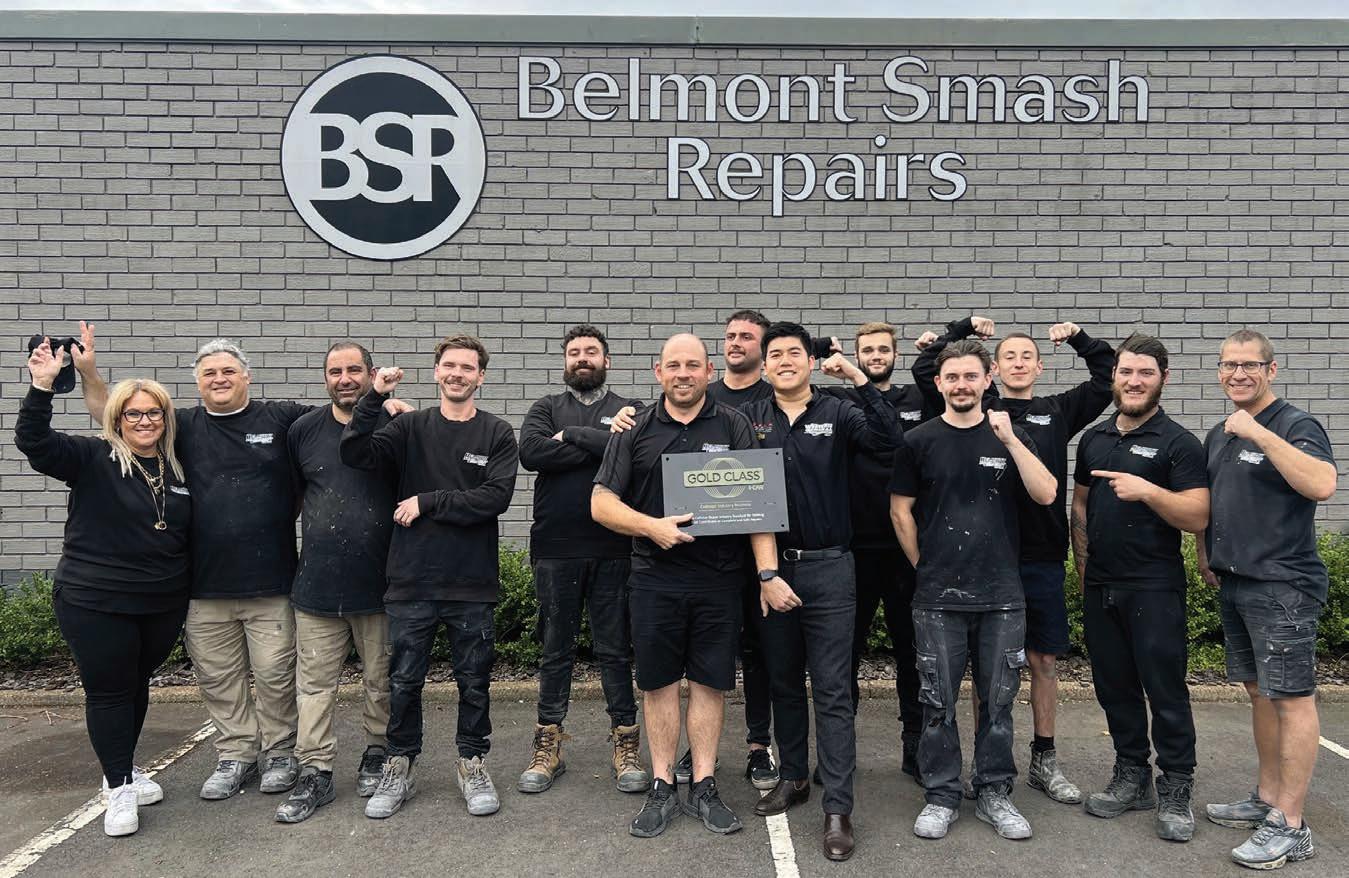
The team at Western General Bodyworks Group are convinced the future of automotive repair holds plenty of change in store and striving towards high training standards is an important way of meeting it.
Western General Bodyworks Group is a collective of ten collision repair shops across the eastern states of Australia with their sights firmly set on the future. Training is a big part of that future and this year they have clocked up all ten of the shops meeting I-CAR Gold Class Collision training accreditation. The Gold Class status is the highest level of accreditation within the I-CAR Professional Development Program.
WGB group business director, Danny Buzadzic celebrated the awards, acknowledging that the Road to Gold program and cemented the group’s
standards in providing top-notch service to customers.
“Achieving Gold Class status signifies our commitment to excellence and differentiates us in the collision repair industry,” Buzadzic says.
“I wanted our team to benefit from the latest training and knowledge to stay ahead in this fast-changing field. By participating, we aim to ensure our repairs meet the highest industry standards, enhancing customer confidence and satisfaction.”
“The program offers a thorough framework that improves our skills, knowledge, and overall performance. This combined with the continuous learning aspect ensures that we
stay updated with the latest industry standards and technologies,” he says.
“Our team across Western General Bodyworks has become more skilled, confident, and tech-savvy, which has significantly improved our service quality, making it a worthwhile investment for any collision repair shop.”
WGB director Nathan Thai says the efforts by all the workshops have helped cement their reputations as trusted industry leaders in quality and service.
“Becoming an accredited OEM repairer such as Tesla, Porsche and

highest standards set by I-CAR for safety, quality and service,” he says. “This ensures our team stays on top with the industry and our staff is proud to be a part of a trusted name in this industry.”
Thai says another recipient of the recognition, Belmont Smash Repairs in New South Wales showed how valuable the Gold Class training can be for any collision repair business.
“The program is a game-changer,” Thai says. “It not only hones technical skills but also instils a proactive learning culture.”
“The most rewarding aspect of achieving Gold Class at Belmont Smash Repairs was the profound impact on our team’s cohesion and skill advancement.
“The collective journey toward this shared goal strengthened our collaboration and elevated our
beyond being a certification, has transformed us into a more unified, capable, and tech-savvy team, positioning Belmont Smash Repairs for sustained success in the ever-changing automotive industry.
“This training isn’t just about meeting industry standards; it’s a strategic investment in staying ahead. So, without a doubt, I’d encourage any colleague or business to dive into Gold Class for a transformative boost in skills, confidence, and overall shop performance.”
Thai outlined how the training didn’t come without its challenges. He highlighted how the training often required careful planning to ensure everyone could actively participate.
“The hands-on certification, while immensely valuable, demanded a delicate balance between daily
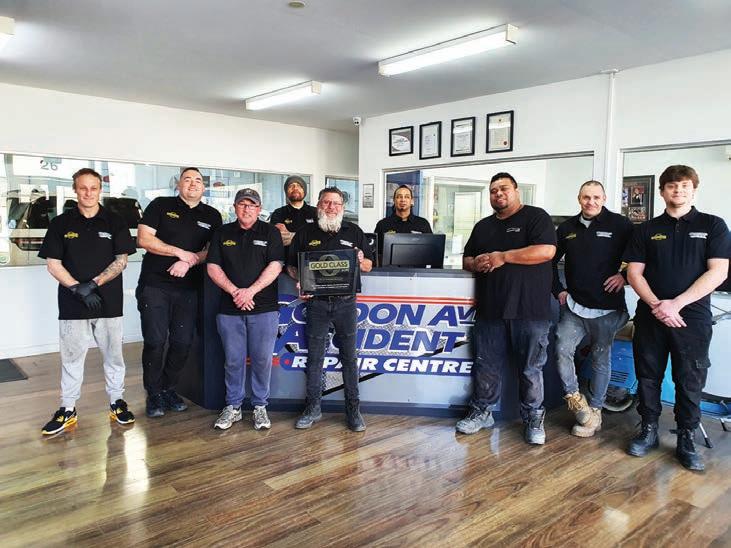
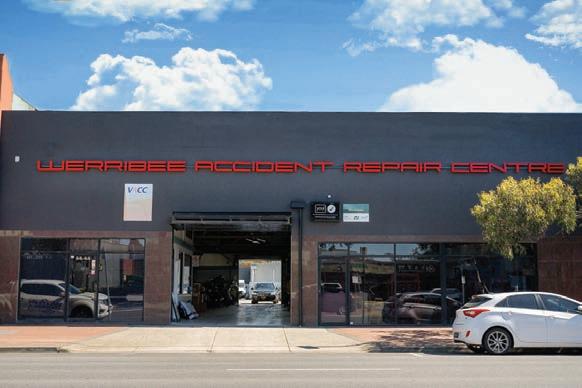
operations and dedicated certification time. It was a juggling act, but the commitment of the team made it possible,” Thai says.
“The versatility of the training delivery options proved highly advantageous for Belmont Smash Repairs. Afternoon virtual classrooms emerged as a preferred method. This adaptability facilitated a smooth learning experience.”
The Gordon Avenue Accident Repair Centre was another workshop to achieve the Gold Class Collision status showing the benefits and challenges of adding an intensive training schedule into the already busy workload.
“Achieving Gold Class at Gordon Avenue Accident Repair Centre was both challenging and rewarding, managing the daily operations alongside the time needed for online quizzes, virtual classes, and hands-on certifications required careful planning, but our valued team’s commitment made it possible,” Buzadzic says.
“This experience has improved our ability to tackle similar challenges in the future and highlighted the importance of investing in top-quality training.”
“I wanted to invest in our team’s skills and provide them with the best tools and knowledge,” he says.
Buzadzic outlined how the various training delivery options made the training accessible to work schedules of staff.
“The online quizzes provided flexibility, allowing our team to complete them at their convenience
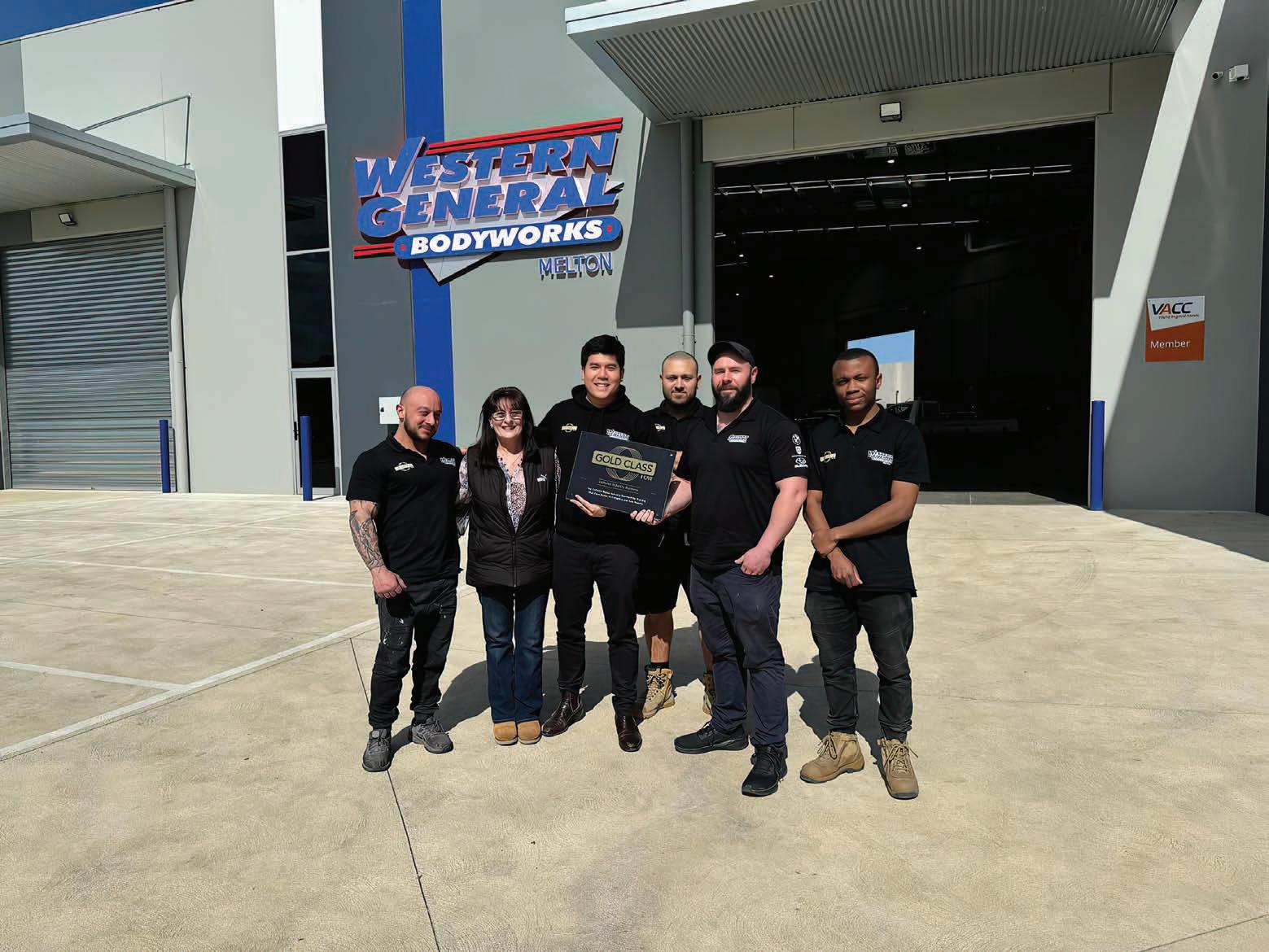
their regular duties,” Buzadzic says.
“The hands-on certification was valuable for applying what we learned and for validating our skills. Overall, the combination of online, virtual, and practical training methods was wellbalanced and suited our needs.”
“We’ll include renewal training as a consistent part of our professional development schedule which will enable us to keep our skills sharp, our knowledge current, and our service quality exceptional. This ongoing dedication will help us maintain our Gold Class status and continue to provide outstanding repair services to our customers”
building endeavour Buzadzic says.
“For Werribee Accident Repair Centre, working together towards this goal significantly strengthened our teamwork and collaboration, creating a more cohesive unit,” Buzadzic says.
“The feedback from our staff has been very positive. They appreciate the practical nature of the Gold Class training and how it directly applies to their day-to-day work.”
He skills, knowledge, and overall performance says the training notably boosted their confidence and skills, particularly in modern repair techniques and new technology.
“This newfound expertise has not
and teamwork, making the staff feel more competent and motivated. Gold Class training has enhanced the teams’ technical abilities and job performance, benefiting both the business and our customers.”
For Buzadzic the training is part of an ongoing plan of personal and professional development for the group.
“By joining the Road to Gold program, we aimed to stand out from competitors, enhance our repair capabilities, and boost customer satisfaction. Incorporating Gold Class renewal training is a key part of this strategy.”


NSW’s leading automotive industry body has highlighted its commitment to training the next generation of repair workers with a newly opened and refurbished training centre in Sydney.
The Motor Traders’ Association of NSW purchased MyTradeStart and the centre in September 2023 and has opened the revamped training facility to develop industry-ready training. The centre will offer automotive body repair, among its courses, and have a new dedicated EV training hub, the MTA hopes will ensure apprentices gain future-focused skills for the industry.
MTA NSW CEO Stavros Yallouridis says the refurbished MyTradeStart facility complements the organisation’s existing onsite training model.
“With the opening of these training facilities, we can tailor our training even further to meet the individual needs of each student, whether that be through hands-on, onsite experience or in a classroom setting,” Yallouridis says.
MyTradeStart offers six accredited courses, including certificates in

Automotive Body Repair Technology, Heavy Commercial Vehicle Mechanical Technology, Light Vehicle Mechanical Technology, Automotive Electrical Technology, and Automotive Air Conditioning Technology.
MTA NSW has implemented its training standards across all the courses, offering apprentices the opportunity
industry knowledge and passion to the training experience.
With smaller class sizes, students also benefit from personalised mentorship and one-on-one time with trainers, fostering a collaborative learning environment where they can build valuable connections with their peers and industry leaders.
The rise of EVs and particularly hybrid technology has™ demanded repair skills to match, and Victoria’s leading automotive body has completed its latest round of specialised training courses.
The VACC recently held intense three-day courses in specialised EV training led by industry expert Neil Speetjens from Automotive Certified Training Academy, to equip participants with advanced skills to meet industry demand.
The VACC said those who completed the program are already recommending it to others eager to stay at the forefront of this evolving landscape.
The course began with the IMI Level 3 Qualification in Electric/Hybrid Vehicle
System Repair and Replacement of the High Voltage Certification Training program that gains technicians an internationally recognised certificate from the Institute of the Motor Industry.
The training offered comprehensive knowledge on key topics such as electrical circuits, the role of components in high-voltage systems, and the application of Ohm’s law.
It covered transformer and rectifier operations, relays and transistors, vehicle intake safety, HV battery diagnostics, four-wire measurement, insulation testing, EV diagnostic techniques, and safe disconnection procedures.
Following the Level 3 training, staff could then progress to the IMI Level 4
Award in the diagnosis, testing and repair of electric and hybrid vehicles, a two-day intensive course, focusing on hands-on skills in diagnostics and repair.
It covered safe battery removal, disassembly, and repair procedures, live high-voltage testing, including work with 400-volt systems and hybrid batteries and detailed diagnosis and repair techniques
The VACC says the feedback has been unanimously positive, praising the high calibre of training and strongly recommended the course to anyone keen to gain a competitive edge in the automotive industry.
For more information on upcoming training sessions and to register, visit the VACC’s website.
Australia’s leading automotive body is aiming to help repairers with the vexed issue of defective parts and where they stand with the customer, in a new guide.
In the second of its resources for collision repairers, the Motor Trades Association of Australia has teamed up with the Motor Body Repairers Association (AMBRA) and legal firm, HWLE Lawyers with the intention of giving repairers a better understanding of where they stand on defective parts.
The new guide outlines what rights and obligations collision repairers have when the parts they have used for a repair are found to be defective. The guide looks at several scenarios including when the customer is covered by insurance, has had a cash settlement or is not insured.
In the first scenario under an insurance arrangement, the guide notes a repairer using a defective part may have breached the contract with the insurer and “most likely will need to make good any defective work”.
It recommends repairers study the warranties of parts suppliers carefully to
ensure defects or failures are covered and redress in the form of costs or replacements can be recovered.
However, the guide notes the situation changes when an insurer directs a repairer to use parts from a specific supplier against the recommendations of the repairer. But as outlined in the first guide, the ability to recover costs from the insurer relies in this scenario when something goes wrong, depends on the repairer having the written evidence of this arrangement.
“If an insurer directs you to source parts for a repair from a particular supplier, but you prefer to use your own supplier, you should attempt to come to an agreement with the insurer,” the MTAA guide says. “If an agreement cannot be reached and you believe that using the insurer’s suggested supplier is not the course of action you would recommend, ensure you obtain the insurer’s requirements in writing.”

taken depends on whether the defect is a major or a minor failure. The repairer’s relations with the supplier of the defective part become a separate issue.
If the repairer is dealing with an uninsured customer, then their obligations are directly to that customer under
Undaunted by the slowing confidence in EVs, major insurer IAG has pushed ahead with its plan to make its entire fleet electric.
IAG this month announced it will transition its fleet of 900 vehicles including brands NRMA Insurance, CGU Insurance, AMI and NZI to electric vehicles and hybrid by 2030.
IAG will also install domestic EV chargers into the homes of employees who adopt an EV as their tool-of-trade vehicle.
It comes amid flattening sales of EVs in Australia as charging and range issues cause concern, and major drops in uptake in places like the EU where they have been popular.
The IAG step aims to reduce the scope one emissions by 47 per cent of each vehicle compared to the group’s current internal combustion vehicles.
IAG Managing Director and Chief Executive Officer Nick Hawkins said it was part of their recent strategy to secure a greener future for Australia and New Zealand.
“We must also play our part, and we are accelerating our efforts to understand and manage our own climate impact, seeing first-hand the effect climate change is having on our customers and direct business operations,” Hawkins says.
“Transitioning our fleet to lowemission vehicles is an important step
The guide also recommends to mitigate risks by sourcing parts “from reputable suppliers and ensure that the terms of your acquisition provide at least basic protections against defective goods.” towards achieving our goal to become a net zero insurer by 2050.”
“With more than 2.4 million fleet cars utilising Australian roads it’s important that fleet owners consider ways to support the transition to a low-carbon economy.”
The move follows a year-long EV pilot program where IAG tested and validated EVs in rural and metro settings and identified barriers to ownership which included access to charging infrastructure.
The infrastructure will be provided and maintained by JET Charge, an Australian company.
Car manufacturer Kia will provide both EV and HEV options across IAG’s Australian fleet.
Australia’s largest automotive cooperative continues to celebrate its 50th year with news of record returns to its members.
Capricorn Society, can now lay claim to almost 30,000 members across the automotive and repair sectors and has announced its returns based on cooperative principles, reached a value of $92.3 million, a 12 per cent increase over last year.
The figure that includes Capricorn Rewards Points, Trade rebates for purchases and share dividends to members equal a return value of 26.9 per cent or 26.9 cents for every dollar spent with Capricorn.
The highlights:
• $56.6 million in Capricorn Rewards Points
• A trade rebate of $18.5 million issued as Bonus Capricorn Rewards Points on each Member’s September statement.
• $15.3 million in ordinary dividends of 7 cents per share for the FY 2023/24.
Capricorn Group CEO David Fraser
says the outstanding result further emphasises the rewarding benefits of being a Capricorn Member.
“It is so pleasing to be able to report another set of record results for Capricorn Members across Australia and in New Zealand,” Fraser says.
“Members can be confident that Capricorn is in the best shape of its 50-year history and the returns that they have gained prove that together we are stronger than ever.”
“These results also highlight our Members’ and Preferred Suppliers business growth that has been achieved
during the year, playing an integral role in achieving this outstanding result.”
Capricorn Society was established in 1974 from a group of Golden Fleece service stations in WA and has kept the ethos of helping small business alive, growing to 29,000 members across Australia and New Zealand including mechanical workshops, collision repairers and auto electricians.
Capricorn’s Trade Account has more than 2,000 Preferred Suppliers and also offers members access to risk protection, exclusive industry events and a generous Capricorn Rewards program.
MTA Training and Employment has been recognised as a finalist in the Large Training Provider of the Year category at the 2024 South Australian Training Awards.
Recognising its unique connection to the automotive industry, a recent change to its training model led to a 25 per cent growth in apprentice numbers. This cemented MTA Training and Employment’s position as one of South Australia’s best Large Training Provider.
MTA SA/NT CEO Darrell Jacobs expressed pride in the organisation’s progress towards its strategic vision.
“A little more than two years ago we said that we wanted to be the best automotive skills provider in South

Australia. I am encouraged by the recognition that we have received,” Jacobs says.
The connection to the automotive industry informed not only MTA Training and Employment’s training model, but also its pioneering school pathways and apprentice mentoring programs, as well as Australia’s first automotive dual trade apprenticeships.
“Our job is to make sure that businesses and apprentices are ready for whatever enters the workshop.”
Jacobs outlined that while running an industry non-government training organisation is hard work, it created a deep sense of purpose for the organisation and its employees.
“We are in the business of changing the lives of young South Australians. We support an industry worth over $2 billion to our state’s economy through 5,000 businesses who employ 27,000 South Australians,” Jacobs says.
MTA Training and Employment, the Motor Trade Association SA/NT’s fully-accredited registered training organisation) delivers nationallyrecognised, industry-leading automotive vocational education and training to more than 1,100 apprentices across nine automotive trades.
MTA Training and Employment has training locations at the MTA Royal Park Training and Employment Centre, MTA Cleve Automotive Skills Centre, as well as in Bordertown.
Australia’s leading aftermarket authority is pushing to simplify repairers’ access to OEM information and wants a universal diagnostic interface to make it more cost effective.
Two years since the introduction of the pioneering ‘Right to Repair legislation, the Australian Automotive Aftermarket Association wants the changes as the multiplicity of diagnostic portals and the prohibitive costs to independent workshops are still blocking access.
The AAAA wants amendments to the Motor Vehicle Information Scheme (MVIS) in response to concerns from independent workshops as they seek to navigate the increasingly complex world of repair diagnostics and OEM coding.
AAAA CEO Stuart Charity says the law remains a game changer but it needed to adapt to ensure it continues to meet the repair business’s needs.
“Independent repairers currently need to subscribe to over 60 different car brand portals, each with its own unique process and costly brand-specific tools,” he says.
“For all-makes-and-models’ workshops, the burden of navigating multiple subscriptions and paying exorbitant fees
for brand-specific diagnostic tools—some charging up to $510 per day—is simply not sustainable.”
“The number one challenge workshops are finding with the new law is the lack of uniformity in obtaining information from the various OEM portals and the lack of access to use a universal pass-through interface, such as J2534, for diagnostic software or programming files.”
The AAAA is seeking to amend the MVIS to require all manufacturers to adopt the SAE-J2534 protocol, a universal standard for vehicle diagnostics that would allow workshops to use a single tool across all vehicle brands, reducing costs and simplifying the repair process.
“The J2534 amendment is crucial—it will ensure the law works as intended and delivers real, impactful change for independent workshops across Australia.”
The AAAA also wants changes for data aggregators, who provide essential service and repair information for multiple car brands. Under the current scheme, manufacturers are not required to license all technical service bulletins and other critical repair data to aggregators, it says.
“Data aggregators are key players in

The AAAA is pushing for a universal diagnostic interface to help repairers.
supporting multi-brand repairers, but they’re being denied full access to vital information,” says Charity.
“We will push for changes to ensure car companies share all relevant data with aggregators.”
The AAAA wants members to continue to give feedback on the MVIS to help shape the future of the scheme while Charity continues to push the matter with the federal Assistant Minister for Competition Andrew Leigh.
Repairers can provide feedback on the MVIS email advocacy@aaaa.com.au
Toyota’s experience and prescience in the alternative powertrain space continues to pay off with its hybrids, particularly the RAV4, as it continues to smash records.
The Federal Chamber of Automotive Industries monthly figures show another huge jump in the uptake of hybrid technology, up 45 per cent from last year but a sharp drop off in EVs.
Battery EVs dropped to 3434 new vehicles, 50 per cent down on August 2023 but the total new sales of EVs in 2024 remained 1.4 per cent up on 2023.
However, the numbers no longer record the sale of Tesla and Polestar.
The hybrid trend which has dominated the headlines in 2024, continued in August with Toyota’s RAV4 achieving its highest monthly sales in the model’s 30year history and again topping the new vehicle charts for August.
Ninety-five per cent of the 6,712 new RAV4s sold were hybrids and it was the biggest contributor to Toyota’s marketshare of 21.9 per cent.
In April the mid-sized SUV toppled the duel between the Ford Ranger and the HiLux that had dominated the new vehicle sales charts for the past year and has now held the spot three times.
FCAI Chief Executive Tony Weber says
the total sales for August, the second highest ever, were a good result despite August 2024 being down by 10.6 per cent on last year’s August number.
“Consumers continue to embrace low emission vehicles with hybrid sales up 44.9 per cent on August 2023 while sales of plug-in hybrid vehicles are up 119.8 per cent,” he says.
“However, in line with the experience in many global markets, sales of battery electric vehicles are disappointing. This is despite the supply of battery electric vehicles increasing significantly with more brands and EV models having entered the Australian market.”
with John Yoswick
The collision repair industry continues to evolve, and successful shop owners are finding ways to adjust and change their business to adapt.


A recent “rountable” of US shop owners shared the lessons about changes they’ve made in their business in the past couple of years, and how those changes have worked out.
Kena Dacus, co-owner with her husband Chris of Dacus Auto Body in Kansas, says it’s been just over two years since they switched the shop’s compensation plan from commission to hourly.
“That high-production, commission environment was not really creating the culture we were looking for,” Dacus says. “Our technicians weren’t as focused on high-quality, OEM repairs [as we wanted]. And it was really difficult to recruit entry-level technicians because the technicians that we had really weren’t interested in taking time to help us grow some of this younger talent.”
So they converted each technician’s prior year income into a 40-hour work week wage so none of them were going to earn less. At the same time, they shifted production into more segments, with vehicles moving through the different departments.
“When you have an entry-level
technician, or even someone who has some automotive experience, but maybe not in collision, they can still be really valuable in different departments without having to be valuable in every department,” Dacus says. “We’re able to recruit mechanics now. Mechanics actually work really well in disassembly and reassembly. And what we’re finding is we don’t need a whole shop full of A-level technicians at this point. We only need a couple because we’re able to bring in some other talent, maybe even some from other industries, who can just work in one department and get really efficient there and then grow their skills.”
She says the shop has about 20 employees, and the change was not without challenges.
“For some technicians, it wasn’t the environment that they wanted to work in, so we did lose a couple,” she says of the transition. “But to be quite honest, those were the technicians that we had a hard time getting them to see the importance of following OEM procedures and doing quality work. So while it was scary to go through, I think it turned out for the best, ultimately.”
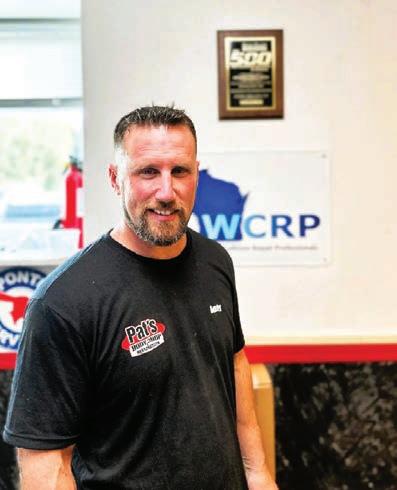
Mike Daniel, who owns three Mountain View Autobody Shops in New Jersey, in the past year bought another building in which to open a stand-alone advanced driver assistance systems (ADAS) calibration center. All three of his shops – two of which are a couple miles apart, and the third is about 45 minutes away – now feed cars into that center.
Rather than doing that work under the Mountain View name, Daniel set up another corporate identity for it.
“A certain insurance company says they would only pay [a certain amount] for calibrations if I did them under the Mountain View label,” Daniel says. “But for whatever reason, if I have a [separate] company that owns the calibration equipment, and we sublet the work to that company, they would pay me the invoice with mark-up. So it didn’t take a rocket scientist to figure that one out.”
Andy Grundman has been working on succession planning with his father.
“Pat’s Body Shop has been in business since 1953, and was passed along until my father took over, and he’s now passed the business on to me,” Grundman says of his 5-employee shop in Wisconsin.
He’s now working to train a new manager to handle more of the day-today operations at the business, and has been doing some technician training a local technical college “to help give back to the industry a little bit.”
“I also recently had our website revamped, and I’m in talks right now with [a company] that specializes in body shop marketing and online presence.”
Scheduled estimates, collecting ‘co-pays’
Micah Strom, co-owner of Modern Collision Repair in Washington state, says it’s now been just over a year since he switched to a 4-day workweek.
“It helps with employee retention and acquisition, and our customer base loves it, the fact we’re giving employees more time off,” he says. “We also shut down for lunch like a doctor’s office, with everyone having lunch from Noon to 12:30 p.m. It’s much easier than staggering lunches. It’s sort of like our being completely closed on Fridays. If you’re trying to stagger when
employees are here, someone might not know what’s going on with a file if a customer calls in. So we just decide to all be here at the same time, and all be gone at the same time.”
Strom says he started doing estimates by appointment only in 2020 when the pandemic started, but has stuck with that. “It has worked out really well for our shop,” he says. “It gives you the time to be with the customer if they have questions. You can get everything taken care of on it rather than having them back-to-back or not knowing when the next one is showing up.”
The company has 23 employees between its collision shop, separate mechanical shop, rental car business and detail shop. Strom has chosen not to be a direct repair shop for any insurance company.
“We don’t work for them; we work for customers,” he says. “A couple years ago, we started collecting the short-pays from the customer [for shop charged not paid for by their insurer]. That starts right from the beginning, when the customer walks in with an estimate, explaining to them what the differences are between our shop and other shops that are out there, explaining to them that we actually follow the OEM procedures. I’m not going to fix a car how an insurance
company wants it fixed. It all comes down to educating the customer. I haven’t really noticed any change in our capture rate from estimates to a repair.”
Third-generation shop owner Evan Opeka of Opeka Auto Repair says the market where his three shops are located in Pennsylvania is highly competitive, with a lot of large and regional multi-shop operations.
“So we have positioned ourselves to aim towards the higher-end automaker certifications to kind of separate us from the market and be able to get paid the way we want to get paid,” Opeka says. “So we’ve been working on certifications for Lucid and BMW and Jaguar Land Rover. Chasing down the higher-end certifications is definitely helping us make a name for ourselves. Beyond that, we’re really focusing on getting [post-repairs] safety checks done for vehicles to the OEM specifications. We just want to make sure we do the highest quality repair we can do. We’ve also been honing in our parts staging process to increase efficiency for our technicians, because they are paid hourly plus commission. It’s been going really well and made a positive impact.”


The revealing Crash Course Report has highlighted key trends in vehicle repair in the US for the latest quarter of 2024 that have important lessons for the global direction of the industry.
CCC Intelligent Solutions’ Crash Course Report highlighted vehicle complexity, labour shortages and driving behaviours in the US as some of the elements from quarter three in 2024 that will have an emerging impact on the collision repair industry.
The average total cost of repair for the first half of 2024 currently stands at US$4,642, a 3.7 per cent increase relative to the first half of 2023 (US$4,477). But the report also found parts costs had stabilised.
Following large increases in average parts costs in 2021 and 2022, the average price per part increased a modest 0.2 per cent in 2023.
Through Q1 of 2024, the average price per part was down -0.7 per cent compared to Q4 2023. However, the average price per part increased by
2.4 per cent in Q2 2024, the largest quarterly increase since Q2 2022.
EV segment continues to grow. Despite evolving customer sentiment, slow infrastructure execution and relatively high average new vehicle prices, the electric vehicle segment continues to grow.
According to the Kelley Blue Book, electric vehicle sales increased by 7.3 per cent in the first half of 2024. EVs now make up 1.1 per cent of vehicles in operation in the US while internal combustion engine vehicles account for 92 per cent of the mix.
The average EV repair costs 46.9 per cent more than the average non-EV to repair but total writeoffs are recorded as less frequent, according to the report. However, the non-electric vehicle segment of the car parc is larger and more mature
than the emerging EV segment.
Labour accounts for the largest contribution to the difference between EV and non-EV repair costs for vehicles three years old or newer, though shops are beginning to see parts costs account for a larger share of EV repair costs.
As vehicle complexity continues to increase, the rising number of replacement parts per vehicle and the growing labour hours required per repair may impact the repair industry in 2025.
In what the Crash Course Report defines as some of the key trends shaping the repair industry in the years to come, it notes that the average replacement parts on any repair has increased from 10.6 parts to 13.2 in 2022 while the average labour hours has increased from 23.9 hours to 27.3 hours over the same period.

For the future it says, repairers will likely need to manage more intricate and time-consuming repair processes, driving up repair costs and potentially extending repair cycle times. Finding new ways to create efficiencies to meet this demand will be crucial for a business’s viability in 2025, it notes.
Growing vehicle complexity is also likely to further increase the number of supplements needed during the repair process. Delays in supplement approvals could significantly slow down repair cycle times, making it crucial for insurers and repair shops to streamline this process to avoid unnecessary delays.
The decline in the number of collision repair technicians in the US from 158,600 in 2017, to 152,000 in 2021, may continue to exacerbate capacity challenges in repair shops in 2025.
With few skilled technicians available to manage the increasing volume of complex repairs, repair cycle times could lengthen, placing further strain on the
adapting through new technologies and more efficient processes.
Despite these gains, the ongoing technician shortage will likely require a continued focus on strategies to keep cycle times manageable. This could include investments in recruitment, training and technology.
Additionally, insurers could play a larger role in supporting the talent pipeline, especially as more individuals from tech programs transition in related roles like appraises and claims representatives.
The global supply chain continues to face threats from labour shortages, union strikes, and wars, in some cases causing supply chain disruptions that can impact vehicle production.
Strikes affecting major auto manufacturers in the US have resulted in production delays and supply constraints, exacerbating vehicle shortages and inflating the cost of both new and used vehicles.
Additionally, strike-driven disruptions
manufacturing processes. If the trend continues, it may further affect the auto industry into 2025. In addition, events like the Key Bridge collapse in Baltimore in March, which caused major supply chain delays, are impossible to predict but underscore the need for proactive risk management strategies.
The report also found In 2025, risky driving behaviours in the US, such as increased speeds and distracted driving, may continue, contributing to elevated accidents rates and repair demand.
With nearly 60 per cent of drivers engaging in dangerous actions in 2024, including more than 32 per cent driving distracted, repair shops could see sustained or even increased demand for services the report noted.
While ADAS technologies aim to reduce crashes, data continues to indicate two forms of morale hazard with drivers: over-reliance on ADAS systems to prevent crashes or other incidents, and riskier driving behaviours.
Combined with technician shortages,

In a further sign of just how prevalent ADAS systems have become in modern cars, a US study has found at least six systems are in more than 90 per cent of 2023 vehicles.
A further four ADAS systems were found in more than half of vehicles in a study that shows the sharp trajectory of uptake since 2015.
The Partnership for Analytics Research in Traffic Safety (PARTS) a partnership between auto manufacturers and the National Highway Traffic Safety Administration, looks at the deployment of ADAS in 98 million passenger vehicles sold in the US from 2015–2023 and produced by nine OEMs.
The aim of the partnership is to tabulate the adoption of the Driver Assistance systems in the interests of road safety.
It found forward collision warning and automatic emergency braking (AEB) are in 94 per cent of 2023 vehicles up from 12.8 per cent and four per cent of cars when they were first recorded in 2015.
Pedestrian detection warning and pedestrian AEB braking systems are also in 91.9 per cent of the studied cars from 2023. In 2015, these were only in about three and one-in-100 cars.
Lane departure has also reached a historic level of market penetration with 92.5 per cent of cars, with lane keeping assistance in 86.3 per cent.
Automatic High Beam (AHB) penetration increased from 7.5 per cent in model year 2015 to 89.8 per cent in model year 2023. This growth in advanced lighting technology reflects its importance in enhancing nighttime driving safety.
Other systems like Active Driver Assistance and Curve Speed Correction that were not even recorded five years ago, are now in a third and one-in-five modern vehicles.
The nine participating OEMs who provided vehicle data account for about 80 per cent of the US market.

The uptake of ADAS systems in vehicles further reflects a market driven demand where consumers make safety a key element of choice in purchasing a new vehicle.
The Autonomous Vehicles: Consumer Trends and Attitudes Survey conducted in 2023 by a driving software company of 1200 US drivers found the advanced driver-assistance systems are consumers’ top priority when choosing their next car. Ghost Autonomy found 80 per cent of respondents said safety systems played a pivotal role in their choice of vehicle and 61 per cent said they’d accelerate their next purchase for breakthrough safety technology.
The growth of the market for ADAS technology is also expected to grow in Australia by more than 10 per cent per year.
The Bureau of Transport and Research Economics noted for instance that in 2019, about five per cent of new cars/ SUVs and 23 per cent of new LCVs sold were equipped with adaptive cruise control but this was forecast to reach 100 per cent by 2035. BITRE also estimates 34 per cent per cent of new vehicles with Automatic Emergency Braking systems in 2019 will reach 100 per cent of new cars by 2031. It also forecast 35 per cent were sold with lane warning in 2019 but would reach 100 per cent from 2029 to 2034.
According to new data, battery as a service (BaaS) and battery swapping have emerged as trending topics of discussion among companies, to reduce the cost of ownership while addressing sustainability challenges.
Governments worldwide have been making efforts to make transportation more sustainable and environmentally friendly to boost the adoption of electric vehicles but high costs associated with battery, lower range, and charging infrastructure pose major challenges.
Data and analytics company, GlobalData, have released a new report that reveals that companies seem to be exploring the opportunities of battery swapping, with related discussions spiking up in their filing documents. Companies are collaborating to provide solutions and expand their network to deploy swapping stations.
GlobalData business fundamentals analyst, Misa Singh outlined how the core vehicle and industry manufacturers are showcasing interest in innovative approaches to battery swapping.
“Companies are interested in these markets to improve operational efficiencies, expand the standard
battery-swapping network, and provide convenient options to customers,”
Singh says. “The Indian government is also playing a vital role in this area by introducing subsidy policies to attract companies.”
According to GlobalData, Gogoro Inc mentioned working closely with the Indian Ministry of Heavy Industries, the Indian Battery Swap Association, and other original equipment manufacturers (OEMs) to finalise India’s Fame 3 subsidy plan and the inclusion of battery swapping in that plan.
The Taiwanese company discussed its pilot program with Rapido, which received positive feedback from riders expressing satisfaction with the battery swap experience. Furthermore, it is also planning the commercial launch of battery swapping and Gogoro Smart scooters in Q4 2024.
Geely Automobile Holdings Ltd revealed Livan Automobile, a joint venture with Lifan Technology, will target the battery-swapping market, improve the operational efficiency of business customers, and provide a convenient battery-swapping for individual customers.
China is considering raising tariffs on European vehicles and other goods in the latest development of an escalating trade fight with the EU.
Last month the EU voted to impose tariffs on Chinese EVs in an attempt to equalise what it sees as state subsidies and now China has reciprocated, not only considering a similar vehicle tariff but also imposing duties on European brandy, including Cognac and Armagnac.
Australia has no import duties on Chinese EVs, if they come under the
Atul Auto Ltd mentioned that Atul Greentech Private Limited (AGPL), in strategic partnership with Honda Power Pack Energy India & Valeo, will launch battery-swapping technology and infrastructure for EVs. The partnership works towards providing swappable battery solutions in the three-wheeler segment.
Stellantis NV also discussed establishing a partnership with Ample

luxury car tax threshold, and the advent of the New Vehicle Efficiency Standard has seen a plethora of new Chinese brands hit our shores.
But the EU continues with its attempts to curb what it sees as anti-competitive state subsidies, even as the US declares even higher tariffs on Chinese vehicles amounting to 100 per cent of their value.
“China is studying measures including raising the tariffs on imported gasoline cars with a large engine capacity,” the Chinese Ministry of
Commerce said in a statement.
In a separate step, the ministry said imports of brandy from the EU will have to pay a deposit of as much as 39 percent of the value of the brandy effective Oct. 11, European media reported.
Automotive News Europe noted that in 2023 German exports of vehicles with engines of 2.5 litres or larger to China reached $1.2 billion. Discussions are ongoing before the EU makes a final decision.
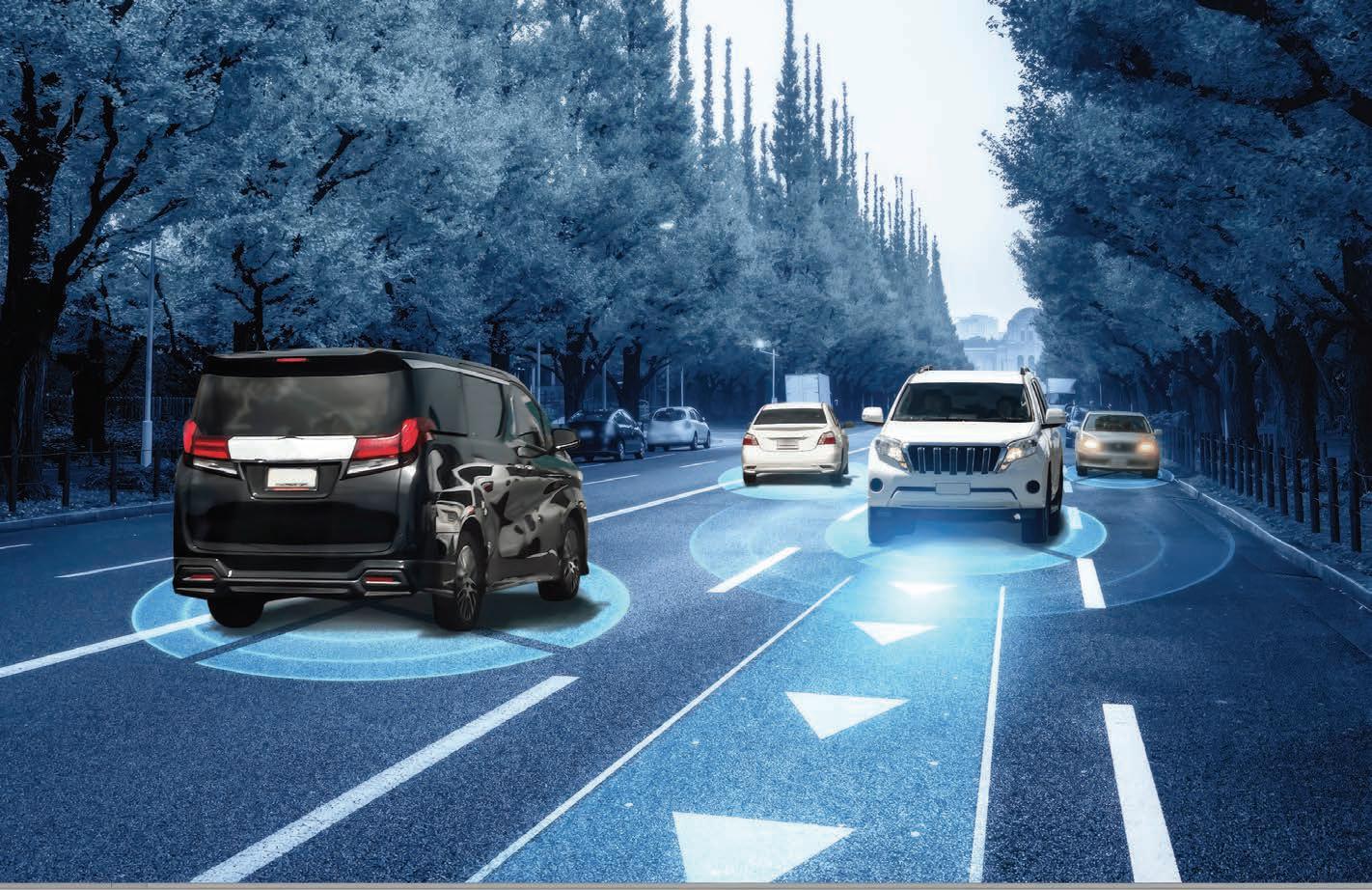
In a sign drivers may be warming to safety assistance systems , a study has found a majority are leaving lane departure warnings on in vehicles equipped with them.
The US survey found almost 90 per cent of drivers of vehicles equipped with lane departure warning and prevention systems now keep them switched on, the Insurance Institute for Highway Safety shows.
Seven out of 10 drivers also left speed assistance systems on that give visual alerts when they exceed the speed limit. While emergency braking systems in the US will be mandatory in new vehicles by 2029, speed assistance systems as law are not so far progressed and last week were halted in California, which had sought to go it alone.
But while forward collision systems, many of which cannot be disabled, account for the majority of crashes in the US the Insurance Institute found, lane departure systems aimed at avoiding side swipes and off-road crashes were often switched off as drivers found them ‘annoying’.
But the IIHS said its data shows while half were switching these systems off eight years ago, the acceptance of the technology had almost doubled to 87 per cent.
IIHS President David Harkey says
automotive manufacturers were overcoming the problem of resistance from drivers.
“These results hint at a growing awareness that crash avoidance systems and other technologies can improve safety,” Harkey says.
“They also indicate that automakers’ efforts to increase usage rates have been a success.”
The IIHS says lane departure warning and prevention systems could address as many as 23 per cent of fatal crashes involving passenger vehicles.
“The increased acceptance of lane departure prevention should translate into larger reductions in crash rates,” Harkey says. “The same thing can happen with anti-speeding alerts — which these results show are already more popular with drivers than some experts believed possible.”
The study looked at different activation from warning systems and preventative systems such as automatic steering adjustments to help redirect the vehicle if it nears the edge of the lane and three quarters had the prevention function enabled and only 11 per cent had only the warning function enabled.
It also found systems that were harder to access, through vehicle settings menu, rather than a button, were more likely to be switched on and that other factors such as visual or vibration alerts
rather than audio alerts were more likely to have them kept on.
“The results reflect a combination of better designs and a growing acceptance of crash avoidance systems, more generally,” the lead author of the study, IIHS Research Scientist Aimee Cox says.
“The new designs make the feature a little harder to turn off and a lot less annoying for the driver.”
Visual speed alerts were one example where design was overcoming reticence.
“These high rates also bolster the results of a recent IIHS survey of drivers who had never used this anti-speeding technology, which showed that 60 per cent of drivers would find speeding alerts acceptable,” the survey found.
“The researchers found that visual speed warnings were activated in 70 per cent of vehicles. In contrast, systems that gave an audible warning when the driver exceeded the speed limit were only switched on in 14 per cent of the vehicles observed.”
The IIHS believes delivering vehicles with speed warnings enabled, resetting on each ignition cycle and configured to adjust to percentages of the posted speed limit could help encourage use.
“Automakers could design the systems to initially warn drivers visually but escalate to audible or haptic alerts if the driver doesn’t reduce their speed.”

Australian repairers may still be coming to terms with a windshield being a lot more than a piece of glass, but the change of technology shows no signs of standing still.
US media reports have highlighted a recent patent filing that indicate Apple may be looking to implement an augmented reality system that projects information onto car windshields.
The patent application in question was filed with the US Patent and Trademark Office in April and published in August. It was first spotted by The Drive website and has since become a hot discussion point among other motoring media magazines.
The application describes using sensors such as visible-light cameras, infrared cameras, radar, and ultrasonic or lidar units, to build a threedimensional picture of the environment around the vehicle.
It also notes that geographical positioning data could be included in the functions and display.
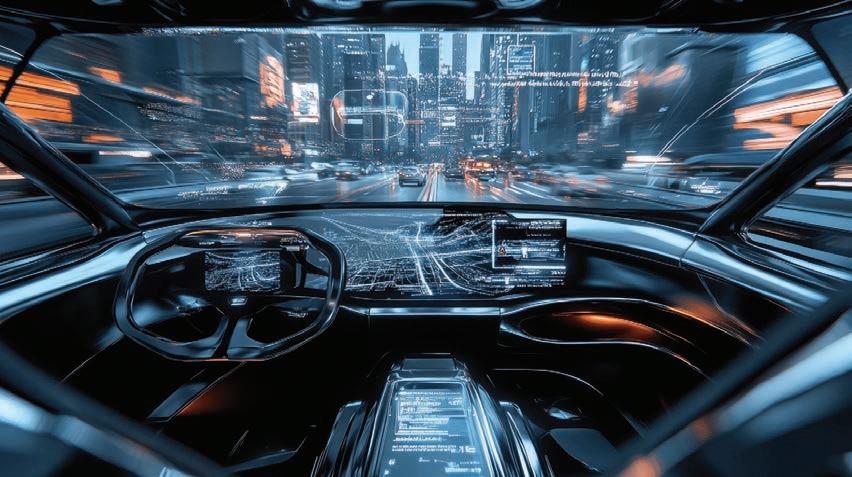
What once seemed like science fiction is now in serious development.
than appearing as flat displays on the windshield.”
Possible uses like highlighting signs with relevant information or outlining a destination that may be obscured by buildings were also listed in the application.
According to Motor Authority, “the system would then overlay information in such a way that it would appear to be populating the environment itself in true augmented reality style, rather
“Apple also suggests using the system to cajole drivers into being more cautious. The application suggests that virtual speed bumps could be projected onto the road if the driver is going too fast, encouraging them to slow down. It could even
work with adaptive suspension to simulate the feeling of passing over speed bumps, Apple suggests. Or it could project images of ‘human child individuals’ to encourage drivers to slow down for school zones.”
Information on how the system would work is limited but there is a suggestion this Apple system would go beyond the simple projections of some limited data currently available and instead create a whole screen of augmented reality with three dimensional images.
TIME Magazine has acknowledged global paint supplier PPG as one of the “World’s Best Companies of 2024”.
TIME Magazine has celebrated PPG as one of the world’s best companies, on a list that ranks the top 1,000 global employers that are forging a path into the future.
The recognition is presented by TIME and Statista, a leading statistics portal and industry ranking provider. Companies named on the list were identified based on three primary elements: employee satisfaction, revenue growth and sustainability.
The surveys were conducted in over 50 countries, with data collected from approximately 170,000 participantsfor employee satisfaction. The evaluation encompassed direct and indirect recommendations of companies, as well as evaluations of employers across the categories of image, atmosphere, working conditions, salary and equality by verified employees.
Companies need to generat a revenue of at least $100 million in 2023 and demonstrate positive revenue growth from 2021
to 2023 to be considered.
Sustainability was also evaluated based on ESG data among standardised KPIs from Statista’s ESG database and targeted data research.
Meanwhile, PPG has also reinforced its credentials as the paint supplier of choice for valuable machinery having won the 2024 Supplier Excellence Award from Caterpillar Inc.
In a statement PPG said the coveted award demonstrates the company’s commitments to a leading brand that has a global presence across multiple industries.
Toyota has followed on from its runaway success with hybrids and particularly the RAV4, by launching a new hybrid-only Camry range in Australia.
Toyota’s early prominence in the hybrid technology space has paid dividends in 2024 with the RAV4 leading the most popular new vehicle for consecutive months and looking set to displace the Ford Ranger as the most popular new vehicle of the year.
Now Toyota’s wants the Camry to be its new flagbearer in its appeal to achieve fuel-savings and decarbonisation, adding a new fifthgeneration 2.5-litre Hybrid Electric powertrain in its Australian Camry lineup.
Toyota claims the new generation Hybrid Electric powertrain delivers fuel consumption of just 4.0L/100km but with more power and improved drive performance.
Toyota Australia Vice President Sales, Marketing and Franchise Operations Sean Hanley says Toyota’s innovation with stylish hybrids is responding to what the market wants.
“Customer demand for Toyota’s fuelsaving Hybrid Electric technology has grown ever-stronger in recent years, and the new Camry’s hybrid-only lineup
reflects that demand,” Hanley says.
“With incredibly low fuel consumption, improved output and driveability, the new Hybrid Electric Camry range offers the performance and driving dynamics our customers demand.
“At the same time, its stylish good looks make it a standout on the road with all the safety, comfort and advanced technology that will ensure it remains Australia’s favourite mid-sized sedan.”
The first fifth-generation 2.5-litre Hybrid Electric powertrain is exclusively offered in the Camry, delivering
compared to the previous generation 2.5-litre hybrid powertrain.
Toyota says the 4.0L/100km fuel consumption figure is returned on all three official ADR81/02 tests for combined, urban and extra-urban cycles with CO2 emissions of just 91 grams per kilometre across all grades and driving cycle tests.
The combined Hybrid Electric system power output has been increased by 10kW to 170kW, compared to the outgoing Camry, generated through a combination of the 138kW/221Nm 2.5-litre petrol engine

Hyundai Motor Company and Škoda Group have partnered in a collaboration to explore a hydrogen mobility system.
The memorandum between the companies aims to cover studies on adoption of hydrogen fuel cell systems and technologies, study on adoption of energy efficient solutions for mobility projects and products and exploring hydrogen ecosystem and value chain opportunities beyond mobility, from their European base.
In a statement both parties say they share the view that hydrogen will be a
key pillar for a sustainable society.
The companies will explore the possibility that Hyundai would share its fuel-cell system and technology, contributing to the acceleration of eco-friendly mobility across global markets where Škoda Group operates, including the Czech Republic.
Hyundai Motor Company and Škoda Group will also conduct feasibility studies for fuel-cell system applications for diverse utilisation beyond mobility. Leveraging its global expertise and insights in operating
various hydrogen applications in both mobility and energy sectors, Hyundai says it wants to play a pivotal role in aiding the energy transition.
Hyundai Motor Group says it is also committed to building a hydrogen society under its hydrogen value chain business brand HTWO, which encompasses the Group’s businesses and affiliates, enabling each stage of the entire hydrogen value chain.
Hyundai Motor Manufacturing Czech was established in 2008 and has an annual manufacturing capacity of 350,000 vehicles.
Nissan has taken another step in developing the flexibility of its new technology by launching a vehicle-to-grid power system in Europe.
Nissan has announced it will launch affordable on-board bi-directional charging on selected electric vehicles from 2026, meaning EVs in the UK will be capable of putting power back into a household or the grid.
Nissan says the initiative forms a key step towards Nissan’ vision of creating a sustainable energy ecosystem.
The Vehicle-to-Grid (V2G) technology, which allows EV owners to use electricity stored in their car’s battery to power their homes, or sell it back into the grid, will launch in the UK initially, followed by other markets in Europe.
The project is underpinned by Nissan’s experience in V2G, with around 40 pilot projects conducted worldwide throughout the past decade.
Following a successful year-long project at The University of Nottingham, UK, Nissan has become the first car company to gain G99 Grid code certification with an AC-based solution, needed to supply electricity into the UK national energy supply.
Under the banner of Nissan Energy, the company’s aim is to roll-out V2G technology across markets in

Europe and beyond, empowering consumers with either AC or DCbased V2G solutions, in alignment with local infrastructure and regulatory requirements.
Nissan says using the on-board bidirectional V2G technology, customers can cut the annual cost of powering an EV by 50 per cent. The same technology can also reduce net CO2 emissions from charging by 30 per cent per year, per EV for the average UK household.
EVs equipped with V2G technology can play a crucial role in integrating and increasing the mix of renewables into the energy supply, by storing electricity generated by wind or solar,
and directing it back into the grid when needed, reducing dependency on fossil fuels.
In a statement Nissan also says the AC-bidirectional system certified in the UK will leverage an integrated onboard charger to deliver a lower cost of entry, allowing the technology to be accessible to more people.
Nissan aims to offer its AC bidirectional charger at a price comparable to a mono-directional charger currently available. Nissan’s V2G system also boasts giving customers complete control and flexibility over their energy via a dedicated app.
The Leapmotor is the latest vehicle that will be added to the collection of Chinese EVs in the Australian market.
Leapmotor International, a partnership between Leapmotor and Stellantis made its splash at the Paris Motor Show with the global launch of its B10 model, the first model in its B-series.
The high-profile launch is part of the company’s’ plans for global expansion, as the company accelerates its efforts to provide
accessible, high-tech electric vehicles across Europe and the globe.
The 2025 Leapmotor B10 small electric SUV is expected to launch in Australia next year and with reports of prices for Leapmotor cars as low as AU$45,888 (for the C10 Style) it could make it one of the most affordable new electric cars on the market.
The push of new EVs into Australia is part of a wider trend signalled by the New Vehicle Efficiency Standard where the Australian market will
open to more low-emission brands.
Chinese car brands have leapt on the opportunity to offer a wider range of electric or hybrid models, with some offering more affordable prices.
In the next 12 months alone, there are seven Chinese brands expected to start selling cars in Australia. Zeekr and Xpeng have announced models and JAC Motors, Skywell, and Jaecoo will also join already-established brands, such as Chery, LDV, GWM, Haval, and BYD.
with Cliff Chambers
Immediately after World War II the US was a nation awash with money. It was also home to thousands of people looking to own cars that were different from those offered by Detroit.
Americans stationed in Britain during the war could sometimes access strictly rationed petrol and buy small, cheap sports cars as personal transport.
When they returned home, some would bring those cars with them, creating demand for similar models and encouraging British brands to set up sales networks in the USA.
With Britain desperate to repay a massive war debt, the slogan ‘Export or Perish’ emerged; encouraging UK carmakers to send virtually everything
they made to overseas buyers.
Australia and other Commonwealth countries were targets, but the majority of Britain’s automotive exports were lefthand drive and headed to the USA.
MG was the pioneer, between 1948 and 1955 selling around 20,000 of its ancient looking TC, TD and TF models to the Americans.
It then switched seamlessly to the modernised MGA which continued to sell strongly against rival models from Triumph and Austin- Healey.
Up a rung in sophistication and price was Jaguar’s XK range, featuring the company’s exceptional 3.4-litre twincam engine.
Although similar in price to USA-

made prestige models, the XK earned a reputation via its extensive list of celebrity owners.
Austin-Healey and Triumph held the middle ground in price and performance. Both could exceed 100mph (161km/h), offered relatively roomy cabins and sporting opportunities for owners willing to race them.
The brands that brought fame and foreign currency to Britain in the 1950s enjoyed greater achievements during the 1960s and ’70s, but just two exist today.
Neither survives as a source of affordable sports cars either, but the heritage created by these four brands remains remarkable.
We looked in detail a few months back at Jaguar’s XK120, but there is more to be said about Jaguar’s groundbreaking sports model. Early production versions were alloy bodied and Australia got the second one of these to leave the factory, followed by about 20 more of the alloy XKs and the first steelbody production car.
In the USA, an importer named Max Hoffman became Jaguar’s distributor and by 1951 had prestige showrooms across the USA, selling more than 3000 cars of various brands annually. From 1950-54 and with a production total of around 12,000 cars, more than 80 per cent of XK120s were left-hand drive.
Much of the sporty Jaguar’s allure came via its association with sporting and show business celebrities. In 1952, an XK120 Roadster cost US$3945, or just $200 less than a Cadillac 62 Series convertible but offered greater exclusivity and star power.
Celebrity owners included actors Humphrey Bogart, Gary Cooper and Clark Gable. One was also delivered to Australian novelist Neville Shute who raced it for several years.
Later XK140 and XK150 versions strengthened Jaguar’s position in the USA as a prestige brand, with total sales during 1958 exceeding 4600 and over half of those XKs.
How the link between Donald Healey’s open-top 100 model and Austin ‘just happened’ is too big a story to tell here, but almost certainly the brand would not have achieved the status it enjoyed without Austin Motor Company money behind it.
The first production Healey 100/4s were built in 1953 and virtually all of those early cars were exported.
Promotion was crucial to a new brand and In March 1954 a prototype Healey 100/4 contested the Sebring 12 Hour race, finishing third outright. Not only did this feat provide publicity opportunities in the North American market, but it also supported the move to build 50 additional cars, designated 100S, for competition use in markets across the world.
Several found their way to Australia, including a car supplied to Austin Distributors of Victoria who loaned it to various prominent drivers including Stan Jones. Four-cylinder versions of the 100 remained available until 1957, selling over 16,000 units before being replaced by a 100/6 version.
This car used a six-cylinder Austin A90 engine which would eventually produce 19kW more power than the 100/4.


T Series MGs were first seen in the USA as used cars shipped home by military personnel returning from Europe. These cars sparked demand for newer models, but all MG could supply initially was the vintage style TC .
The TD announced in 1950 was a lower and wider car with a slightly more comfortable cabin. However, the limitations of its design meant there still was no luggage space except a shelf behind the seats and even that disappeared when the roof was lowered.
The design of these cars hadn’t changed significantly since the first TA model was released in 1936, with body framing still made from timber, minimal weather protection and a top speed for TC and TD models of less than 80mph (130km/h).
None of that seemed to matter in a world desperate for affordable sports cars. In the USA in 1949 a TC cost $1995, or $140 more than a full-sized Chevrolet convertible, but buyers took all that MG could supply During the first year in the US market over 800 TCs were sold new through dealers, with others coming in as private imports. By the mid- 1950s, sales of T Series cars was more than 3000 annually.
Standard cars was a major manufacturer struggling to survive in a world desperate for new vehicles. In the USA, Standard saw its salvation, but the path was not easy.
The TR1 sports car which appeared in 1952 was an appalling design with ‘death trap’ handling. It was replaced just months later by the TR2, which was fundamentally improved and set a series of speed records.
Production TR2s appeared in 1953 and some early-build cars reached Australia in 1954. At launch, the TR2 cost considerably less than an AustinHealey 100 but was still seen as more of a direct rival to the Healey than any of the 1950s MGs.
With 175km/h available from cars with optional overdrive, a TR2 would match the 100/4 in top speed. In addition to the lower price it also offered an optional hardtop plus heater. These made TRs very desirable in countries with chilly winter climates.
Triumph’s sporty model did the job in competition, here and in the USA. Locally, a pair of TR2s finished fourth and fifth outright in the 1954 Australian Grand Prix which was held through the streets of Southport Qld, then a year later a different car won the Tourist Trophy race held in conjunction with the 1955 AGP at Albert Park in Melbourne.


If you had been an MG owner in 1955, having just bought a new TF 1500, the news coming from that year’s Frankfurt Motor Show would have more than ruined your breakfast.
MG’s new ‘A’ model was nothing like the old, although it did share the same engine as the TF.
The design drew on the shape of MG’s EX182 competition car; an aerodynamic body with high cabin sides that finished 12th and 17th at Le Mans in 1955.
Production versions reached the USA late in that year, creating fierce demand and ensuring that virtually all of the first year’s production was left-hand drive. By 1957, demand continued to increase, with US sales topping 13,000 and hitting 16,000 during 1958.
The MGA now enjoyed a design advantage over Triumph’s TR3, although its 1.5-litre engine still lost out in performance. The MG had a wider, longer cabin and could also be ordered with a hardtop.
In 1957 Triumph moved to front disc brakes, but it would take MG until 1960 when a new 1.6-litre engine was introduced to follow.
Current MGA values continue to climb, however, most of the cars sold in Australia remain less expensive than top examples of the TF model they replaced.
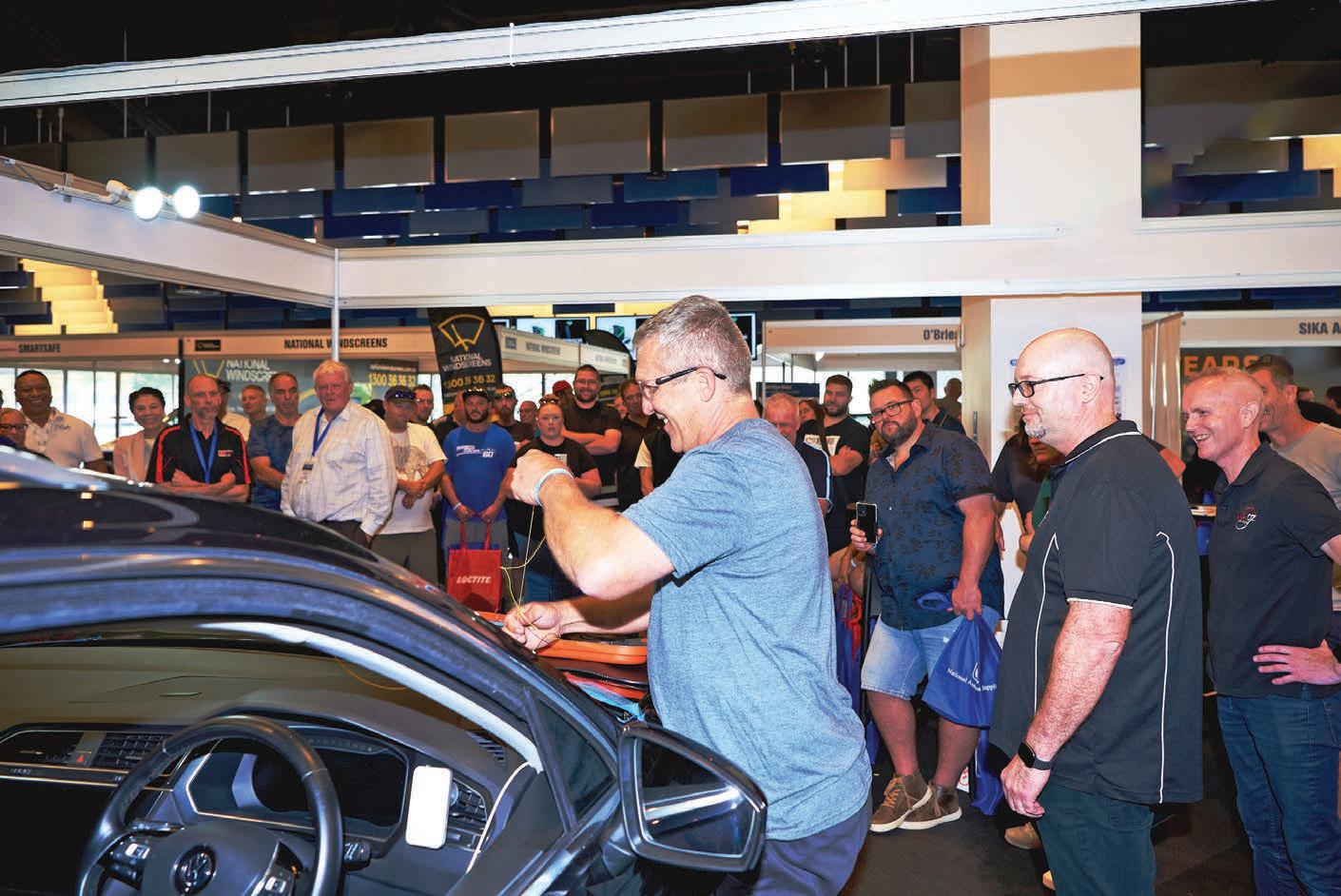
The advance of automotive technology is demanding repairers acquire ever more specialised skills and nowhere is this more apparent than in the oncehumble windscreen.
This vital ‘piece of glass’ is now home to cameras and sensors that are crucial to the correct operation of a vehicle’s safety systems.
Innovation is also a driving force in the growth of the auto-glass sector.
Infrared-reflective glazing to reduce heat and improved fuel or battery efficiency along with the noisecancellation capabilities of acoustic windshields are just some of the innovations in auto glass that Global Data has highlighted will lead to compound growth over the next five years across the region.
As such learning about developments in auto glass and a chance to see up close the latest developments, technology and tools could prove an invaluable opportunity for any repairer.
The 2024 Auto Glass Trade Show held on Saturday, November 9, in Melbourne will provide all this and more.
The event will also be a valuable opportunity for industry networking with industry leaders, professionals along with a strong focus on education by learning about the latest trends, techniques, and advancements in the auto glass field.
Preparations are well under way and
the exciting event looks to be bigger than ever with expected to attract a larger crowd of professionals and enthusiasts from across the auto glass sector.
The list of exhibitors is long and comprehensive including high-tech solutions for modern auto-glass with names like global remote diagnostics specialist Repairify and ADAS solutions experts LaunchTech, some of the stalls where attendees can get face to face expert advice.
The expo will also highlight the diverse industry requirements of all those working with auto glass with tools giant Milwaukee, and Panther Pro-Tools some of the latest to sign up. Once again ALP Oz Moulds will have the largest exhibit with tool demonstrations and trade show specials on offer.
This year’s event is also backed by some of the biggest names in the sector including Platinum Sponsor National Auto Glass Supplies, along with Silver Sponsors National Windscreens, Sika Australia, and Happy Hour Sponsors Merbenit and Auto Glass Shop.
National Auto Glass Supplies CEO Maggie Lo, CEO says their support is all about showing the company’s ongoing commitment to a thriving in the autoglass sector.
“As leaders in innovation and excellence, we recognize the importance of fostering a strong
community where knowledge sharing and collaboration thrive,” Lo says.
“This event provides an invaluable opportunity for industry stakeholders to come together, exchange ideas, and explore the latest advancements in technology and service.”
National Windscreens CEO Campbell Jones agreed with the importance of the opportunity for the wider industry.
“As an industry member in a significant growth phase, supporting the 2024 Auto Glass Trade Show aligns perfectly with our commitment to the industry. It offers a prime opportunity to connect with other leaders and innovators, helping to drive forward the standards and capabilities of our sector.”
Sika Australia Business Manager
Steven Theron says the Auto Glass Trade Show will be a great opportunity for sharing knowledge and advancing the auto glass sector.
“At Sika Australia, we understand the importance of continuous improvement and education in the auto glass industry, and we are excited to be a part of it.”
The 2024 Auto Glass Trade Show will be held at the Melbourne Showgrounds, Epsom Road, in Melbourne from 10am to 4pm on Saturday November 9.
For more information, to register for the event, or to become a sponsor, please visit www.autoglass.org.au






